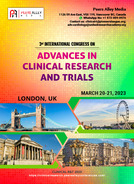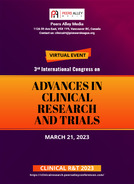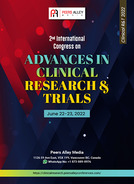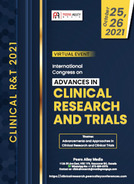
Primary goal of attending an international conference is to present a paper to the experts and influencers. It gives you a platform to exchange your interest-related thoughts, paving the way for possible future collaborations.

Use this platform to build connections with an elite group of wise men and women to enhance your intellect. Young entrepreneurs, this is a great platform to connect with your peers.

Knowledge is Power. Knowledge teaches skills. Skills define excellence. Use this platform to become cognizant of your interest area to achieve excellence in your domain.

Attending a conference give you opportunity to get your abstract or paper published in conference proceedings

Meet and greet a myriad of industry professionals and academia experts with common interest. Every meal will be an opportunity to meet and interact with fellow researchers, attendees and experts.

Expand your professional competency and learn useful tips and tricks of your industry in our skill-building workshops.

Explore insights on recent advancements, new equipment, new techniques, and unpublished data, learn from thought-leaders and get to network with a great line up of speakers.

Our exhibits floor offers the attendees with a dynamic display of the latest products with cutting-edge technology.

Investing in you is the best investment. Peers Alley conferences give the patrons with a feeling of the serendipity of real learning, skill development in strategic workshops, networking and start-up opportunities, thus, is value for money.

Attending the conference gives you much needed break from your regular duties. It also allows you to explore new cities, culture and meet new people. You will feel energized and rejuvenated to return to the university and continue with the job after attending the conference.
Conferences are vital forum for academic researchers and business leaders. "It involves multiple presentations, interactive breakout sessions, hands-on product demonstrations and unrivalled networking opportunities".
We have invited some of the world's most sought-after keynote speakers, experts, brand ambassadors, and industry leaders to share their thoughts and ideas with our conference guests.
Register Now
BioS-BioL 2024 is an important event that plays a crucial role in advancing the development and understanding of biosimilars, and improving patient access to life-saving therapies. It provides a platform for researchers, scientists, industry professionals, policymakers, and other stakeholders to share their knowledge and insights on biosimilars. Biosimilars are biologic drugs that are highly similar to existing biologic drugs and are designed to be just as safe and effective as the original product.
Moreover, this conference helps to facilitate partnerships and collaborations between academia, industry, and regulatory agencies, which are essential for the development and approval of biosimilars. The conference also provides an opportunity for attendees to network, learn from each other, and gain insights into the challenges and opportunities in the biosimilars industry.
-----------------------------------------------------------------------------
Biosimilars Proceedings
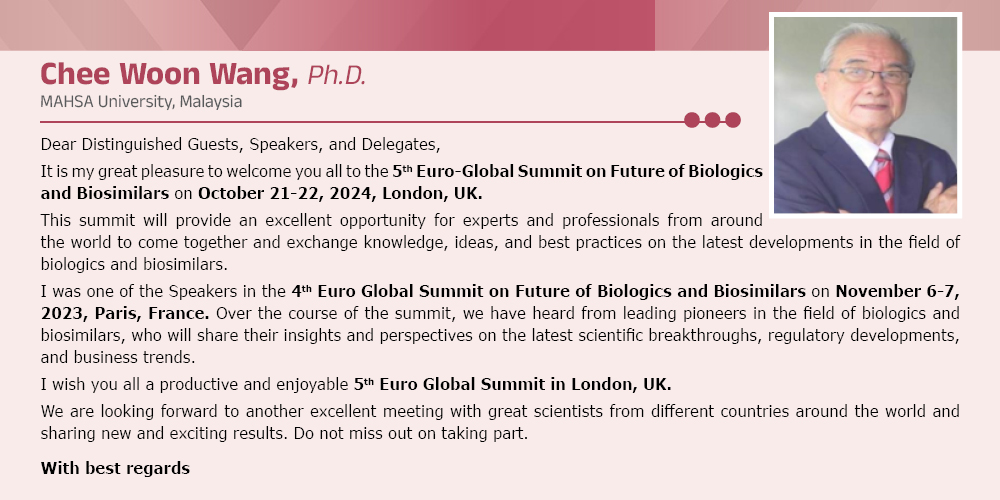
Five possible major objectives that the summit aims to achieve:
I wish you all a productive and enjoyable summit, and look forward to hearing about the new insights and ideas that will emerge from our discussions.
------------------------
With best regards,
BioL-BioS 2024
Organizing Committee
Peers Alley Media, Canada

NYU Grossman Long Island School of Medicine, USA

Clinic Ottakring, Austria

University of Florida, USA

Fundación Bobath, Spain
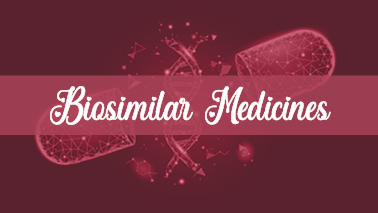
Biological medicine, also known as biomedicine, is a branch of medicine that uses the principles of biology and biochemistry to understand and treat human diseases. It encompasses a wide range of scientific disciplines, including genetics, molecular biology, biochemistry, pharmacology, and immunology.
One of the main focuses of biological medicine is to understand the biological mechanisms underlying diseases and to use this knowledge to develop new treatments. For example, researchers in this field may study the genetic mutations that cause certain cancers, or the molecular pathways that lead to inflammation in autoimmune diseases.
Biological medicine also includes the use of biologics, which are drugs or therapies derived from biological sources such as living cells, tissues, or organisms. These can include vaccines, gene therapies, and monoclonal antibodies.
One of the most well-known examples of a biological medicine is insulin, which is a hormone that regulates blood sugar levels and is used to treat diabetes. Other examples of biological medicines include interferons, which are used to treat viral infections and some cancers, and erythropoietin, which stimulates the production of red blood cells and is used to treat anemia.
Overall, biological medicine plays an important role in modern healthcare, and ongoing research in this field continues to provide new insights and treatments for a wide range of diseases.
Global Market:
The global biological medicine market is a rapidly growing industry that is projected to continue its expansion in the coming years. Biological medicines, also known as biologics, are complex drugs that are produced from living organisms or their components. These drugs are used to treat a range of diseases, including cancer, autoimmune disorders, and chronic inflammatory conditions.
According to a report by Market Research Future, the global biological medicine market is expected to grow at a compound annual growth rate (CAGR) of 6.2% from 2017 to 2023. The market is driven by factors such as the increasing prevalence of chronic diseases, rising demand for personalized medicine, and advancements in biotechnology research and development.
North America is currently the largest market for biological medicines, accounting for more than 40% of the global market share. The region is home to a large number of biopharmaceutical companies and research institutions, as well as a well-established regulatory framework for drug approval.
Europe is the second-largest market for biological medicines, with a market share of around 30%. The region has a highly developed healthcare system and a significant number of biotech companies and research institutes.
The Asia-Pacific region is projected to be the fastest-growing market for biological medicines, with a CAGR of 8.1% from 2017 to 2023. The region has a large population and a growing middle class, which is driving demand for high-quality healthcare services.
Some of the key players in the global biological medicine market include Amgen, Roche, Novartis, AbbVie, Johnson & Johnson, Pfizer, Merck, Sanofi, Eli Lilly, and Bristol-Myers Squibb. These companies are investing heavily in research and development to bring new and innovative biological medicines to the market.
Tags
Biosimilar Medicine Conferences
Generic Drug Conferences 2024
Biosimilar Conferences 2024 Asia
Biosimilar Conferences 2024
Biosimilar Conferences 2024 USA
Intellectual Property Rights Conferences
Rare Disease Conferences
Biologics Conferences 2024
Biosimilar Conferences 2024 Europe
Pharmacokinetics and Pharmacodynamics of Biologics Conferences
Biologics Conferences 2024 Europe
Medical Devices and Diagnostics Conferences
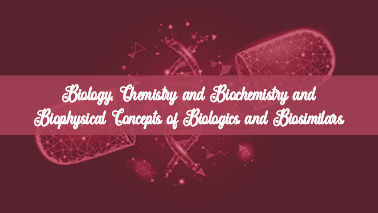
Biology, chemistry, biochemistry, and biophysics are all important concepts in the study of biologics and biosimilars, which are drugs or therapies derived from biological sources. These concepts help researchers and manufacturers to understand the structure and function of these complex molecules and to develop new drugs that are safe, effective, and consistent in their quality.
In biology, researchers study the molecular and cellular processes that underlie biological systems, including the structure and function of proteins, enzymes, and other biomolecules. This knowledge is critical in the study of biologics and biosimilars, which are typically large, complex molecules that are derived from living cells or tissues. By understanding the biology of these molecules, researchers can design drugs that target specific disease pathways and are well-tolerated by the body.
Chemistry is also important in the study of biologics and biosimilars. Chemical analysis is used to identify and quantify the components of these molecules, which can help researchers to develop methods for manufacturing and testing these drugs. For example, chromatography is often used to separate and purify biologics and biosimilars, while mass spectrometry can be used to identify and quantify specific components of these molecules.
Biochemistry is a subfield of biology that focuses on the chemical processes that occur within living organisms. In the context of biologics and biosimilars, biochemists study the structure and function of proteins, carbohydrates, and other biomolecules, which can provide insights into the properties of these complex molecules. Biochemical analysis can also be used to determine the purity, stability, and activity of biologics and biosimilars.
Finally, biophysics is a field that combines biology and physics to study the properties of biological systems at the molecular and cellular level. In the study of biologics and biosimilars, biophysical methods such as X-ray crystallography, nuclear magnetic resonance (NMR) spectroscopy, and dynamic light scattering (DLS) are used to determine the 3D structure of these molecules and to study their interactions with other biomolecules.
Overall, the concepts of biology, chemistry, biochemistry, and biophysics are all essential in the study of biologics and biosimilars. These fields provide the foundation for understanding the complex structure and function of these molecules, and for developing safe and effective drugs for the treatment of a wide range of diseases.
Global Market:
Biologics and biosimilars are complex drugs that are produced from living organisms or their components. These drugs are used to treat a range of diseases, including cancer, autoimmune disorders, and chronic inflammatory conditions.
Biology is a fundamental discipline that underpins the development and production of biologics and biosimilars. Biologics are produced using living cells, which are genetically engineered to produce proteins or other molecules that have therapeutic properties. These living cells must be carefully cultured and maintained in order to produce a consistent and high-quality product.
Chemistry and biochemistry are also important disciplines in the development and production of biologics and biosimilars. These drugs are typically large, complex molecules that require advanced chemical and biochemical analysis to fully understand their structure, function, and interactions with the body.
Biophysics is another important area of study in the development of biologics and biosimilars. Biophysics is the study of the physical properties of biological systems and the interactions between biological molecules. Biophysics plays a critical role in the development and optimization of biologic drugs, including the characterization of their physical properties and their interactions with target molecules and cells.
Biosimilars are similar to biologics, but they are not identical. Biosimilars are designed to be highly similar to an already approved biologic drug, but they may have some minor differences in their structure or composition. These differences can affect the drug's safety and efficacy, and they must be carefully evaluated during the development and regulatory approval process.
Overall, the development and production of biologics and biosimilars requires a deep understanding of biology, chemistry, biochemistry, and biophysics. These interdisciplinary fields work together to ensure the safety and efficacy of these complex drugs, which are an increasingly important part of modern medicine.
Tags
Generic Drug Conferences 2024
Biosimilar Conferences 2024
Pharmacokinetics and Pharmacodynamics of Biologics Conferences
Legislative and Regulatory Pathways for Biosimilars Conferences
Rare Disease Conferences
Biosimilars and Biologics Conferences
Biologics Conferences 2024 Europe
Biologics Conferences 2024 Asia
Biosimilar Conferences 2024 Europe
Medical Devices and Diagnostics Conferences
Biosimilar Conferences 2024 Asia
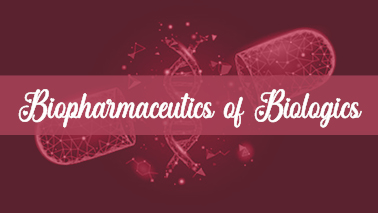
Biopharmaceutics is the study of the physical and chemical properties of drugs and their formulations, and how these properties affect their pharmacokinetics and pharmacodynamics. In the context of biologics, biopharmaceutics is particularly important, as these complex molecules have unique properties that can impact their efficacy, safety, and immunogenicity.
One of the key considerations in the biopharmaceutics of biologics is their large molecular size and complexity. Biologics are typically much larger than traditional small molecule drugs, which means they may have different absorption, distribution, metabolism, and excretion (ADME) properties. For example, biologics may not be readily absorbed into the bloodstream through the gastrointestinal tract, and instead may need to be delivered via injection or infusion.
The stability and aggregation of biologics is also an important consideration in biopharmaceutics. Biologics can be sensitive to temperature, pH, and other environmental factors, which can impact their stability and efficacy. Aggregation, or the clumping together of molecules, can also be a problem for biologics, as it can affect their safety and immunogenicity.
In addition, the immunogenicity of biologics is a key concern in biopharmaceutics. Biologics can be recognized as foreign by the immune system, which can lead to the development of antibodies that can reduce their efficacy and increase the risk of adverse events. To minimize the risk of immunogenicity, biologics must be carefully designed and formulated, and undergo rigorous testing to ensure their safety and efficacy.
Finally, the bioavailability and pharmacokinetics of biologics can be affected by their route of administration, formulation, and other factors. For example, the half-life of a biologic can be influenced by its size, charge, and interactions with other molecules in the body. These factors must be carefully considered when developing and testing biologics, to ensure that they are safe, effective, and well-tolerated by patients.
In summary, the biopharmaceutics of biologics is a complex and multifaceted field that encompasses a range of considerations, including the unique properties of these molecules, their stability and aggregation, their immunogenicity, and their pharmacokinetics and bioavailability. By carefully considering these factors, researchers and manufacturers can develop biologics that are safe, effective, and consistent in their quality.
Global Market:
The global biopharmaceuticals market is a rapidly growing industry that includes biologics as a key segment. Biologics are complex drugs that are produced from living organisms or their components, and they are used to treat a wide range of diseases, including cancer, autoimmune disorders, and chronic inflammatory conditions.
According to a report by Grand View Research, the global biopharmaceuticals market is projected to reach $526.0 billion by 2028, growing at a compound annual growth rate (CAGR) of 6.8% from 2021 to 2028. The growth of the biopharmaceuticals market is driven by several factors, including the increasing prevalence of chronic diseases, rising demand for personalized medicine, and advancements in biotechnology research and development.
North America is currently the largest market for biopharmaceuticals, accounting for more than 40% of the global market share. The region is home to a large number of biopharmaceutical companies and research institutions, as well as a well-established regulatory framework for drug approval.
Europe is the second-largest market for biopharmaceuticals, with a market share of around 30%. The region has a highly developed healthcare system and a significant number of biotech companies and research institutes.
The Asia-Pacific region is projected to be the fastest-growing market for biopharmaceuticals, with a CAGR of 8.7% from 2021 to 2028. The region has a large population and a growing middle class, which is driving demand for high-quality healthcare services.
Some of the key players in the global biopharmaceuticals market include Amgen, Roche, Novartis, AbbVie, Johnson & Johnson, Pfizer, Merck, Sanofi, Eli Lilly, and Bristol-Myers Squibb. These companies are investing heavily in research and development to bring new and innovative biologic drugs to the market, and they are also expanding their global presence through strategic partnerships and collaborations.
Tags
Biosimilar Conferences 2024 Asia
Generic Drug Conferences 2024
Generic Drug Conferences
Biosimilar Conferences 2024 Europe
Biologics Conferences 2024 Asia
Precision Medicine Conferences
Rare Disease Conferences
Biologics Conferences 2024
Medical Devices and Diagnostics Conferences
Pharmacokinetics and Pharmacodynamics of Biologics Conferences
Biosimilar Conferences 2024
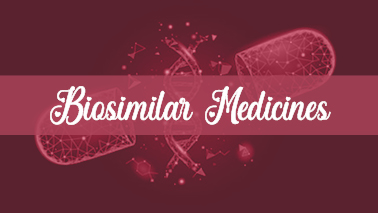
Biosimilar medicines are products that are highly similar to a reference biological product, with no clinically meaningful differences in safety, purity, and potency. Biosimilars are developed using similar scientific principles as those applied to reference biological products, but may have minor differences in their composition due to their complex nature.
Biosimilars are not identical to the reference product, unlike generic drugs which are identical to their branded counterparts. Biosimilars are developed through a rigorous process of analytical testing, non-clinical studies, and clinical trials to demonstrate that they are highly similar to the reference product and are equivalent in terms of safety and efficacy.
Biosimilars can offer several benefits to patients and healthcare systems. They can provide more affordable treatment options, increase patient access to biologic therapies, and improve competition in the market. However, the development of biosimilars can be challenging due to the complexity of the molecules and the need for extensive analytical and clinical testing.
Regulatory authorities such as the FDA and EMA have established guidelines and requirements for the approval of biosimilars, which include demonstrating similarity in physicochemical properties, biological activity, safety, and efficacy to the reference product. These regulatory agencies require robust clinical data to support the safety and efficacy of biosimilars, which can involve conducting clinical trials in a range of patient populations and indications.
In summary, biosimilars are highly similar to reference biological products, and are developed using similar scientific principles. They offer several benefits to patients and healthcare systems, but require rigorous testing and regulatory approval to ensure that they are safe and effective alternatives to the reference product.
Global Market:
The global biosimilars market is a rapidly growing industry that is projected to continue its expansion in the coming years. Biosimilars are similar to biologic drugs, but they are not identical. Biosimilars are designed to be highly similar to an already approved biologic drug, but they may have some minor differences in their structure or composition.
According to a report by Grand View Research, the global biosimilars market is expected to reach $69.4 billion by 2028, growing at a compound annual growth rate (CAGR) of 31.6% from 2021 to 2028. The growth of the biosimilars market is driven by several factors, including the increasing demand for cost-effective alternatives to biologic drugs, the growing incidence of chronic diseases, and the rising geriatric population.
North America is currently the largest market for biosimilars, accounting for more than 40% of the global market share. The region has a well-established regulatory framework for biosimilar approval, and several biopharmaceutical companies are investing in the development and production of biosimilars.
Europe is the second-largest market for biosimilars, with a market share of around 30%. The region has a highly developed healthcare system and a significant number of biotech companies and research institutes that are working on the development of biosimilar drugs.
The Asia-Pacific region is projected to be the fastest-growing market for biosimilars, with a CAGR of 35.4% from 2021 to 2028. The region has a large population and a growing middle class, which is driving demand for high-quality healthcare services.
Some of the key players in the global biosimilars market include Pfizer, Sandoz International, Teva Pharmaceutical Industries, Amgen, Celltrion, Biocon, Dr. Reddy's Laboratories, Mylan, Samsung Bioepis, and Hospira. These companies are investing heavily in research and development to bring new and innovative biosimilar drugs to the market, and they are also expanding their global presence through strategic partnerships and collaborations.
Tags
Biosimilar Conferences 2024
Biosimilar Conferences 2024 USA
Biosimilars and Biologics Conferences
Pharmacokinetics and Pharmacodynamics of Biologics Conferences
Rare Disease Conferences
Legislative and Regulatory Pathways for Biosimilars Conferences
Biologics Conferences 2024 Europe
Biologics Conferences 2024 Asia
Generic Drug Conferences 2024
Biosimilar Conferences 2024 Asia
Biologics Conferences 2024
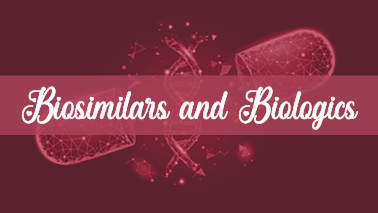
Biosimilars are a type of biologic medicine that is highly similar to a reference biologic product, with no clinically meaningful differences in safety, purity, and potency. Biologics, on the other hand, are a class of therapeutic products that are derived from living cells and used to treat a variety of diseases.
The development of biosimilars is based on the principles of biologics, but the two types of medicines have several important differences. Biologics are typically much larger and more complex than small molecule drugs, and are produced using living cells or organisms. This means that biologics can be sensitive to environmental factors, and may require special handling and storage conditions.
Biosimilars are developed through a process of analytical testing, non-clinical studies, and clinical trials, to demonstrate that they are highly similar to the reference product and are equivalent in terms of safety and efficacy. The clinical testing required for biosimilars is more extensive than for small molecule generic drugs, as there may be slight differences in the structure and composition of the biosimilar and reference product.
Both biologics and biosimilars are used to treat a wide range of diseases, including cancer, autoimmune disorders, and infectious diseases. However, biosimilars are typically less expensive than the reference biologic, and can offer a more affordable treatment option for patients and healthcare systems.
In conclusion, biologics and biosimilars are both important types of medicines used to treat a variety of diseases. Biosimilars are developed using similar scientific principles as biologics, but are not identical to the reference product. Biosimilars can offer a more affordable treatment option, but require rigorous testing and regulatory approval to ensure their safety and efficacy.
Global Market:
The global market for biologics and biosimilars is a rapidly growing industry that is expected to continue its expansion in the coming years. Biologics are complex drugs that are produced from living organisms or their components, and they are used to treat a wide range of diseases. Biosimilars are similar to biologic drugs but are not identical, designed to be highly similar to an already approved biologic drug, but may have minor differences in their structure or composition.
According to a report by IQVIA, the global biologics and biosimilars market was valued at $319 billion in 2020 and is projected to grow at a compound annual growth rate (CAGR) of 7-10% over the next five years. The growth of the market is driven by several factors, including the increasing prevalence of chronic diseases, the growing demand for personalized medicine, and the rising geriatric population.
North America is currently the largest market for biologics and biosimilars, accounting for more than 40% of the global market share. The region has a well-established regulatory framework for biologics and biosimilar approval, and several biopharmaceutical companies are investing in the development and production of these drugs.
Europe is the second-largest market for biologics and biosimilars, with a market share of around 30%. The region has a highly developed healthcare system and a significant number of biotech companies and research institutes that are working on the development of biologic drugs and biosimilars.
The Asia-Pacific region is projected to be the fastest-growing market for biologics and biosimilars, with a CAGR of 10-15% over the next five years. The region has a large population and a growing middle class, which is driving demand for high-quality healthcare services.
Some of the key players in the global biologics and biosimilars market include Roche, Amgen, Pfizer, Novartis, AbbVie, Johnson & Johnson, Merck, Sanofi, Eli Lilly, and Bristol-Myers Squibb. These companies are investing heavily in research and development to bring new and innovative biologic drugs and biosimilars to the market, and they are also expanding their global presence through strategic partnerships and collaborations.
Tags
Legislative and Regulatory Pathways for Biosimilars Conferences
Biosimilar Conferences 2024 Asia
Generic Drug Conferences 2024
Rare Disease Conferences
Precision Medicine Conferences
Biologics Conferences 2024 Europe
Generic Drug Conferences
Pharmacokinetics and Pharmacodynamics of Biologics Conferences
Intellectual Property Rights Conferences
Biosimilar Conferences 2024 USA
Biologics Conferences 2024 Asia
Biologics Conferences 2024
Medical Devices and Diagnostics Conferences
Biosimilar Medicine Conferences
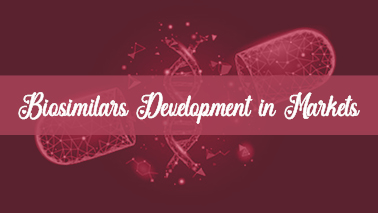
The development of biosimilars is a growing area in the pharmaceutical industry, with increasing numbers of biosimilars entering the market. The development and approval of biosimilars requires a complex and rigorous process, which can be challenging and time-consuming.
Regulatory authorities such as the FDA and EMA have established guidelines and requirements for the approval of biosimilars, which include demonstrating similarity in physicochemical properties, biological activity, safety, and efficacy to the reference product. The regulatory process for biosimilars is more extensive than for small molecule generic drugs, and can involve conducting clinical trials in a range of patient populations and indications.
The development of biosimilars is driven by the need to provide more affordable treatment options, increase patient access to biologic therapies, and improve competition in the market. Biosimilars can offer significant cost savings compared to the reference biologic, which can be a major factor in healthcare decision-making. Biosimilars can also increase patient access to biologic therapies, which can be limited due to the high cost of reference biologics.
In some countries, such as the United States and Europe, the market for biosimilars is growing rapidly, with an increasing number of products being approved and entering the market. However, there are still challenges to the adoption and acceptance of biosimilars, including concerns about safety and efficacy, as well as issues around pricing and reimbursement.
In conclusion, the development of biosimilars is an important area in the pharmaceutical industry, driven by the need to provide more affordable treatment options and increase patient access to biologic therapies. The regulatory process for biosimilars is rigorous, and requires extensive testing to ensure that the biosimilar is highly similar to the reference product and is safe and effective. While the market for biosimilars is growing, there are still challenges to their adoption and acceptance, which will need to be addressed to ensure that they can deliver their potential benefits to patients and healthcare systems.
Global Market:
The development of biosimilars is a rapidly growing market globally. Biosimilars are designed to be highly similar to an already approved biologic drug, but they may have some minor differences in their structure or composition. The biosimilars market is growing rapidly due to increasing demand for cost-effective alternatives to biologic drugs, the growing incidence of chronic diseases, and the rising geriatric population.
According to a report by MarketsandMarkets, the global biosimilars development market is projected to reach $13.6 billion by 2026, growing at a compound annual growth rate (CAGR) of 28.3% from 2021 to 2026. The growth of the market is driven by several factors, including the increasing demand for biosimilars due to their lower cost compared to biologics, the growing need for biosimilars in emerging markets, and the increasing number of patent expirations of biologic drugs.
North America is currently the largest market for biosimilar development, accounting for more than 40% of the global market share. The region has a well-established regulatory framework for biosimilar approval, and several biopharmaceutical companies are investing in the development and production of biosimilars.
Europe is the second-largest market for biosimilar development, with a market share of around 30%. The region has a highly developed healthcare system and a significant number of biotech companies and research institutes that are working on the development of biosimilar drugs.
The Asia-Pacific region is projected to be the fastest-growing market for biosimilar development, with a CAGR of 29.3% from 2021 to 2026. The region has a large population and a growing middle class, which is driving demand for high-quality healthcare services.
Some of the key players in the global biosimilar development market include Pfizer, Sandoz International, Teva Pharmaceutical Industries, Amgen, Celltrion, Biocon, Dr. Reddy's Laboratories, Mylan, Samsung Bioepis, and Hospira. These companies are investing heavily in research and development to bring new and innovative biosimilar drugs to the market, and they are also expanding their global presence through strategic partnerships and collaborations.
Tags
Medical Devices and Diagnostics Conferences
Biosimilar Conferences 2024 USA
Biosimilar Conferences 2024 Asia
Precision Medicine Conferences
Biosimilar Medicine Conferences
Pharmacokinetics and Pharmacodynamics of Biologics Conferences
Biosimilars and Biologics Conferences
Generic Drug Conferences 2024
Biosimilar Conferences 2024 Europe
Intellectual Property Rights Conferences
Biologics Conferences 2024
Generic Drug Conferences
Biologics Conferences 2024 Asia
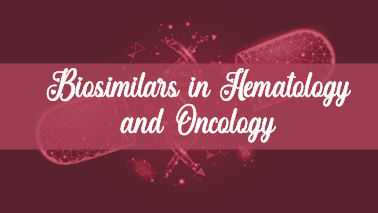
Biosimilars are biological products that are highly similar to reference biologics, but they are not identical due to the inherent complexity of biological products. Biosimilars have the potential to improve patient access to important biologic therapies by increasing competition in the marketplace and reducing healthcare costs.
In the field of hematology and oncology, biosimilars are increasingly being used for the treatment of various malignancies and blood disorders. For example, biosimilars have been approved for the treatment of breast cancer, colorectal cancer, non-Hodgkin lymphoma, and chronic lymphocytic leukemia.
One of the most well-known biosimilars in hematology and oncology is filgrastim-sndz (Zarxio), which is a biosimilar of filgrastim (Neupogen). Filgrastim-sndz is used to stimulate the production of white blood cells in patients undergoing chemotherapy, and it has been shown to be as safe and effective as the reference product.
Other biosimilars that have been approved for use in hematology and oncology include bevacizumab-awwb (Mvasi), a biosimilar of bevacizumab (Avastin), which is used to treat certain types of cancer by blocking the formation of new blood vessels; and rituximab-abbs (Truxima), a biosimilar of rituximab (Rituxan), which is used to treat non-Hodgkin lymphoma, chronic lymphocytic leukemia, and rheumatoid arthritis.
While biosimilars offer potential cost savings and increased patient access to important therapies, there are still concerns about the safety and efficacy of these products. As with any medication, patients and healthcare providers should carefully consider the benefits and risks of using biosimilars in individual cases.
Global Market:
Biosimilars in Hematology and Oncology are a rapidly growing market globally. Hematology and oncology biosimilars are used to treat various types of cancer and blood disorders, and they are designed to be highly similar to an already approved biologic drug, but they may have some minor differences in their structure or composition.
According to a report by MarketsandMarkets, the global biosimilars in hematology and oncology market was valued at $2.4 billion in 2020 and is projected to grow at a compound annual growth rate (CAGR) of 26.3% from 2021 to 2026. The growth of the market is driven by several factors, including the increasing incidence of cancer and blood disorders, the need for cost-effective alternatives to biologics, and the increasing adoption of biosimilars by healthcare providers.
North America is currently the largest market for biosimilars in hematology and oncology, accounting for more than 40% of the global market share. The region has a well-established regulatory framework for biosimilar approval, and several biopharmaceutical companies are investing in the development and production of biosimilars.
Europe is the second-largest market for biosimilars in hematology and oncology, with a market share of around 30%. The region has a highly developed healthcare system and a significant number of biotech companies and research institutes that are working on the development of biosimilar drugs.
The Asia-Pacific region is projected to be the fastest-growing market for biosimilars in hematology and oncology, with a CAGR of 28.6% from 2021 to 2026. The region has a large population and a growing middle class, which is driving demand for high-quality healthcare services.
Some of the key players in the global biosimilars in hematology and oncology market include Pfizer, Sandoz International, Teva Pharmaceutical Industries, Amgen, Celltrion, Biocon, Dr. Reddy's Laboratories, Mylan, Samsung Bioepis, and Hospira. These companies are investing heavily in research and development to bring new and innovative biosimilar drugs to the market, and they are also expanding their global presence through strategic partnerships and collaborations.
Tags
Biologics Conferences 2024 Asia
Biosimilar Conferences 2024
Generic Drug Conferences 2024
Biosimilars and Biologics Conferences
Precision Medicine Conferences
Generic Drug Conferences
Biosimilar Conferences 2024 Asia
Biosimilar Medicine Conferences
Rare Disease Conferences
Intellectual Property Rights Conferences
Pharmacokinetics and Pharmacodynamics of Biologics Conferences
Medical Devices and Diagnostics Conferences
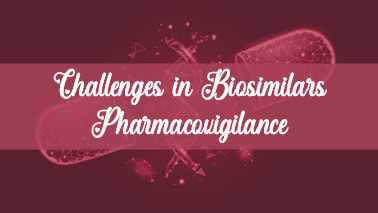
Pharmacovigilance is the science and activities related to the detection, assessment, understanding, and prevention of adverse effects or any other drug-related problems. In the case of biosimilars, pharmacovigilance is particularly important, as these products are not identical to the reference products and may have different safety profiles.
Some of the challenges in biosimilars pharmacovigilance include:
Differentiating between adverse events related to the biosimilar and those related to the reference product: Since biosimilars have a similar structure and activity to the reference product, it can be difficult to determine whether an adverse event is related to the biosimilar or the reference product.
Robust pharmacovigilance systems are necessary to ensure that any safety concerns are appropriately attributed to the correct product.
Limited long-term safety data: Biosimilars are relatively new products, and there may be limited long-term safety data available. Post-marketing surveillance and pharmacovigilance systems must be in place to monitor the safety of these products over the long term.
Differences in immunogenicity: The immunogenicity of biosimilars may differ from the reference product, and this can impact their safety and efficacy. Robust pharmacovigilance systems must be in place to monitor the impact of any differences in immunogenicity between biosimilars and reference products.
Lack of prescriber and patient education: Prescribers and patients may not be aware of the differences between biosimilars and reference products, and may not know how to properly report adverse events. Education initiatives must be in place to ensure that prescribers and patients are aware of the risks and benefits of biosimilars.
In summary, biosimilars pharmacovigilance faces challenges related to the complex nature of biological products, limited long-term safety data, differences in immunogenicity, and lack of prescriber and patient education. Robust pharmacovigilance systems are necessary to ensure the safety and efficacy of these products.
Global Market:
Biosimilars pharmacovigilance faces several challenges in the global market. Pharmacovigilance is the practice of monitoring the safety and effectiveness of drugs and medical devices after they have been approved for use. Biosimilars pharmacovigilance is particularly challenging due to the complex nature of biologic drugs and the limited experience with biosimilars compared to their reference products.
Here are some of the challenges faced by biosimilars pharmacovigilance in the global market:
Variability in product quality and structure: Biosimilars can vary in quality and structure due to differences in manufacturing processes, leading to potential safety concerns. This variability makes it challenging to establish a clear safety profile for biosimilars.
Lack of long-term data: Biosimilars have not been on the market as long as their reference products, so there is limited long-term safety data available. This makes it difficult to assess the long-term safety and effectiveness of biosimilars.
Limited understanding of immunogenicity: Biologic drugs can trigger an immune response, which can affect their safety and efficacy. Biosimilars can also be immunogenic, which makes it challenging to establish the potential risks associated with their use.
Regulatory challenges: Biosimilar regulatory frameworks vary by country, and there is no standardized global regulatory framework. This makes it challenging to ensure consistent monitoring and reporting of adverse events across different markets.
Confusion among healthcare providers and patients: Biosimilars are often confused with generic drugs, leading to misunderstandings about their safety and effectiveness. This confusion can lead to lower adoption rates and affect the quality and quantity of pharmacovigilance data available.
To address these challenges, regulatory agencies, biopharmaceutical companies, and healthcare providers need to work together to establish clear pharmacovigilance guidelines for biosimilars. This includes developing standardized reporting systems and increasing awareness and education about the safety and effectiveness of biosimilars among healthcare providers and patients.
Tags
Biosimilar Medicine Conferences
Biosimilar Conferences 2024 USA
Biosimilar Conferences 2024
Biosimilar Conferences
Intellectual Property Rights Conferences
Biosimilar Conferences 2024 Europe
Pharmacokinetics and Pharmacodynamics of Biologics Conferences
Rare Disease Conferences
Precision Medicine Conferences
Biologics Conferences 2024
Generic Drug Conferences 2024
Generic Drug Conferences
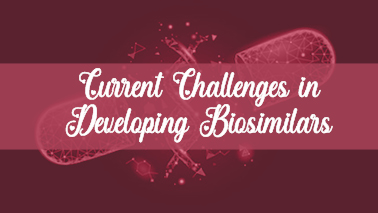
Developing biosimilars can be a complex and challenging process due to the inherent variability and complexity of biological products.
Here are some of the current challenges in developing biosimilars:
High development costs: The development of biosimilars can be costly and time-consuming due to the need for extensive analytical testing, clinical trials, and regulatory requirements. Developing biosimilars requires significant investment in research and development, manufacturing, and clinical studies, which can make it difficult for smaller companies to enter the market.
Variability of biological products: Biological products are inherently variable due to their complex nature, and this variability can be challenging to replicate in a biosimilar. Differences in manufacturing processes, cell lines, and other factors can all impact the quality and consistency of biosimilars.
Regulatory uncertainty: The regulatory pathway for biosimilars is still evolving, and there is a lack of consistency across different regulatory agencies. The requirements for approval may vary depending on the regulatory agency and the country, and this can add to the complexity and cost of developing biosimilars.
Intellectual property issues: The intellectual property landscape for biosimilars can be complex and contentious, with many reference product manufacturers holding patents and other intellectual property rights that may limit the ability of biosimilar developers to bring products to market.
Patient and prescriber education: Patients and prescribers may not be familiar with biosimilars and may have concerns about their safety and efficacy. Education initiatives are necessary to ensure that patients and prescribers are informed about the benefits and risks of biosimilars.
In summary, the development of biosimilars faces challenges related to high development costs, variability of biological products, regulatory uncertainty, intellectual property issues, and patient and prescriber education. Despite these challenges, biosimilars have the potential to provide more affordable access to important biologic therapies and improve patient outcomes.
Global Market :
Developing biosimilars poses several challenges in the global market. Some of the current challenges include:
Regulatory challenges: Biosimilars require extensive clinical trials to demonstrate similarity to the reference product, which can be time-consuming and expensive. Regulatory agencies have been slow to develop clear guidelines for biosimilar development and approval, which has created uncertainty for companies interested in developing biosimilars. There is also no standardized global regulatory framework for biosimilars, which can create challenges for companies seeking approval in multiple markets.
Scientific complexity: Biologic drugs are complex molecules with large and intricate structures, and producing a biosimilar that is highly similar to the reference product can be challenging. Biosimilar developers need to demonstrate that their product is structurally and functionally similar to the reference product, which requires advanced analytical techniques and complex manufacturing processes.
Intellectual property challenges: Biologic drugs are protected by complex patent portfolios that can be difficult to navigate. Biosimilar developers need to navigate these patents to avoid infringement and develop a product that is commercially viable. Patent laws vary by country, which can create challenges for companies seeking to develop biosimilars for global markets.
Manufacturing challenges: Biologic drugs are manufactured using living cells, which makes them sensitive to changes in production conditions. Biosimilar developers need to develop manufacturing processes that can replicate the quality and consistency of the reference product. This can be challenging due to the variability in manufacturing processes used to produce the reference product.
Market access challenges: Even once a biosimilar is approved, there may be challenges in getting it to market. Reference products often have an established market presence and loyal customer base, and biosimilars may face challenges in gaining market acceptance. This can be particularly challenging in markets where there is limited understanding or awareness of biosimilars.
To address these challenges, biosimilar developers need to invest in advanced scientific and manufacturing capabilities, establish strong relationships with regulatory agencies, and develop a comprehensive understanding of the intellectual property landscape in different markets. It is also important for regulators to establish clear and consistent guidelines for biosimilar development and approval to provide certainty and promote investment in biosimilar development.
Tags
Biologics Conferences 2024 Asia
Generic Drug Conferences
Biosimilars and Biologics Conferences
Intellectual Property Rights Conferences
Biosimilar Medicine Conferences
Legislative and Regulatory Pathways for Biosimilars Conferences
Medical Devices and Diagnostics Conferences
Biologics Conferences 2024 Europe
Biosimilar Conferences 2024
Biosimilar Conferences 2024 Europe
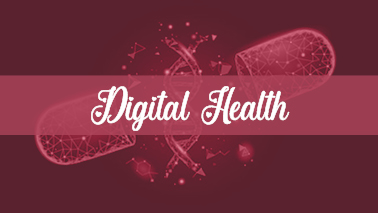
Digital health has the potential to play a significant role in the development and use of biosimilars.
Here are some ways that digital health could impact the biosimilars landscape:
Real-world evidence generation: Digital health technologies, such as electronic health records (EHRs) and mobile health applications, can collect real-world data on the use and effectiveness of biosimilars. This data can be used to generate real-world evidence to support the approval and adoption of biosimilars.
Patient and prescriber education: Digital health technologies, such as mobile health applications and telemedicine, can be used to educate patients and prescribers about biosimilars. These technologies can provide information on the benefits and risks of biosimilars, as well as guidance on how to use them safely and effectively.
Supply chain management: Digital health technologies, such as blockchain and other digital platforms, can be used to improve the transparency and efficiency of the biosimilars supply chain. These technologies can help to ensure the integrity and traceability of biosimilars, reducing the risk of counterfeit or substandard products entering the market.
Personalized medicine: Digital health technologies can enable personalized medicine, which may be particularly relevant for biosimilars. By analyzing patient-specific data, such as genetic and biomarker information, it may be possible to identify the most appropriate biosimilar for a particular patient.
Adverse event monitoring: Digital health technologies, such as social media monitoring and online patient forums, can provide a valuable source of data on adverse events associated with biosimilars. This data can be used to monitor the safety of biosimilars and identify any emerging safety concerns.
In summary, digital health has the potential to play an important role in the development and use of biosimilars, by generating real-world evidence, providing patient and prescriber education, improving supply chain management, enabling personalized medicine, and monitoring adverse events. By leveraging these technologies, it may be possible to accelerate the development and adoption of biosimilars and improve patient outcomes.
Global Market:
The global digital health market is experiencing rapid growth and is expected to continue to do so in the coming years. Digital health refers to the use of technology to improve healthcare delivery, outcomes, and patient experience. The market includes a wide range of technologies, such as electronic health records, telemedicine, mobile health apps, wearable devices, and health information exchange platforms.
The COVID-19 pandemic has accelerated the adoption of digital health technologies as healthcare providers sought to reduce in-person visits and limit the spread of the virus. As a result, the global digital health market is expected to grow at a compound annual growth rate (CAGR) of over 27% from 2021 to 2028, reaching a market size of over USD 1 trillion by the end of the forecast period.
Key drivers of growth in the global digital health market include the increasing prevalence of chronic diseases, the growing demand for remote patient monitoring and telemedicine services, the need for efficient healthcare delivery systems, and the availability of government funding and initiatives to support digital health initiatives.
The market is also characterized by significant technological advancements, such as the integration of artificial intelligence, machine learning, and big data analytics in healthcare. These technologies are expected to play a crucial role in improving clinical decision-making, predicting disease outcomes, and personalizing treatment plans.
The global digital health market is highly fragmented, with a large number of players operating in different segments of the market. Key players in the market include Apple Inc., Philips Healthcare, McKesson Corporation, Cerner Corporation, and GE Healthcare. In addition, there are many startups and emerging players that are leveraging digital health technologies to disrupt the traditional healthcare industry and create new business models.
Tags
Rare Disease Conferences
Precision Medicine Conferences
Biosimilars and Biologics Conferences
Biosimilar Conferences 2024
Pharmacokinetics and Pharmacodynamics of Biologics Conferences
Biosimilar Conferences 2024 Europe
Biosimilar Conferences
Biosimilar Conferences 2024 USA
Generic Drug Conferences 2024
Biosimilar Conferences 2024 Asia
Medical Devices and Diagnostics Conferences
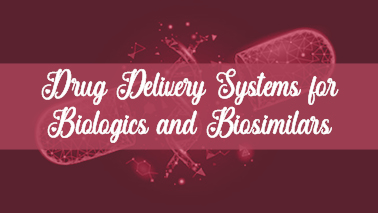
Biopharmaceutical development of biologics and biosimilars is an active area of research and innovation.
Here are some of the frontiers in biopharmaceutical development of biologics and biosimilars:
Gene therapy: Gene therapy involves the transfer of genetic material to patients to treat or prevent disease. This approach is being explored for the development of biologics that can directly target disease at the genetic level. Gene therapy products are complex and require specialized manufacturing and delivery methods, but have the potential to provide long-term cures for genetic disorders.
Cell therapy: Cell therapy involves the use of living cells to treat disease. This approach is being explored for the development of biologics that can repair or regenerate damaged tissues, and for the treatment of cancer. Cell therapy products are highly complex and require specialized manufacturing and delivery methods, but have the potential to provide long-lasting therapeutic effects.
Biosensors: Biosensors are devices that can detect and quantify specific molecules in biological samples. Biosensors are being explored for the development of biologics that can provide real-time monitoring of disease biomarkers or drug levels in patients. This approach has the potential to enable personalized medicine and improve patient outcomes.
Artificial intelligence and machine learning: Artificial intelligence and machine learning are being used to optimize the development and manufacturing of biologics and biosimilars. These technologies can help to predict drug efficacy, optimize manufacturing processes, and identify potential safety concerns.
Next-generation sequencing: Next-generation sequencing is being used to enable more precise characterization of biologics and biosimilars. This approach can help to identify potential impurities or differences in structure that may impact drug efficacy or safety.
Patient-centric design: Patient-centric design is being used to optimize the development of biologics and biosimilars. This approach involves incorporating patient perspectives and needs into the development process, with the goal of improving patient outcomes and satisfaction.
In summary, biopharmaceutical development of biologics and biosimilars is a dynamic and evolving field, with many exciting frontiers being explored. Gene therapy, cell therapy, biosensors, artificial intelligence and machine learning, next-generation sequencing, and patient-centric design are just a few examples of the innovative approaches being used to develop the next generation of biologics and biosimilars.
Global Market:
As an AI language model, I do not have access to real-time market data or financial information. However, I can provide you with some general information on drug delivery systems for biologics and biosimilars.
The global market for drug delivery systems for biologics and biosimilars is expected to grow significantly in the coming years. This growth can be attributed to factors such as the increasing prevalence of chronic diseases, the rising demand for biologics and biosimilars, and the growing need for targeted drug delivery.
Some of the key drug delivery systems used for biologics and biosimilars include injectable drug delivery, transdermal drug delivery, nasal drug delivery, and oral drug delivery. Injectable drug delivery is currently the most widely used method due to its high efficiency and ability to target specific areas of the body.
North America is currently the largest market for drug delivery systems for biologics and biosimilars, followed by Europe and Asia Pacific. This can be attributed to factors such as the presence of advanced healthcare infrastructure, increasing R&D activities, and favorable government initiatives.
It is important to note that the market for drug delivery systems for biologics and biosimilars is highly competitive, with a large number of players operating in the market. Some of the key players in the market include Pfizer, Inc., Novo Nordisk A/S, Eli Lilly and Company, Roche Holding AG, and Sanofi S.A.
Tags
Biologics Conferences 2024 Asia
Biosimilar Conferences
Intellectual Property Rights Conferences
Biosimilar Conferences 2024 Asia
Legislative and Regulatory Pathways for Biosimilars Conferences
Biosimilars and Biologics Conferences
Generic Drug Conferences 2024
Biosimilar Conferences 2024 USA
Biosimilar Conferences 2024
Precision Medicine Conferences
Rare Disease Conferences
Generic Drug Conferences
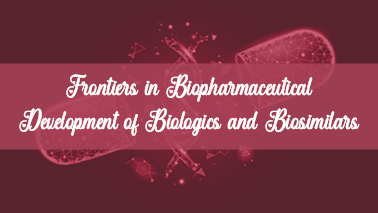
Biopharmaceutical development of biologics and biosimilars is an active area of research and innovation.
Here are some of the frontiers in biopharmaceutical development of biologics and biosimilars:
Gene therapy: Gene therapy involves the transfer of genetic material to patients to treat or prevent disease. This approach is being explored for the development of biologics that can directly target disease at the genetic level. Gene therapy products are complex and require specialized manufacturing and delivery methods, but have the potential to provide long-term cures for genetic disorders.
Cell therapy: Cell therapy involves the use of living cells to treat disease. This approach is being explored for the development of biologics that can repair or regenerate damaged tissues, and for the treatment of cancer. Cell therapy products are highly complex and require specialized manufacturing and delivery methods, but have the potential to provide long-lasting therapeutic effects.
Biosensors: Biosensors are devices that can detect and quantify specific molecules in biological samples. Biosensors are being explored for the development of biologics that can provide real-time monitoring of disease biomarkers or drug levels in patients. This approach has the potential to enable personalized medicine and improve patient outcomes.
Artificial intelligence and machine learning: Artificial intelligence and machine learning are being used to optimize the development and manufacturing of biologics and biosimilars. These technologies can help to predict drug efficacy, optimize manufacturing processes, and identify potential safety concerns.
Next-generation sequencing: Next-generation sequencing is being used to enable more precise characterization of biologics and biosimilars. This approach can help to identify potential impurities or differences in structure that may impact drug efficacy or safety.
Patient-centric design: Patient-centric design is being used to optimize the development of biologics and biosimilars. This approach involves incorporating patient perspectives and needs into the development process, with the goal of improving patient outcomes and satisfaction.
In summary, biopharmaceutical development of biologics and biosimilars is a dynamic and evolving field, with many exciting frontiers being explored. Gene therapy, cell therapy, biosensors, artificial intelligence and machine learning, next-generation sequencing, and patient-centric design are just a few examples of the innovative approaches being used to develop the next generation of biologics and biosimilars.
Global Market:
As an AI language model, I do not have access to real-time market data or financial information. However, I can provide you with some general information on the frontiers in biopharmaceutical development of biologics and biosimilars and their global market.
Biologics and biosimilars are complex molecules that are produced using living cells and are used to treat a range of chronic and life-threatening diseases such as cancer, autoimmune disorders, and infectious diseases. The biopharmaceutical development of these molecules involves extensive research and development, with a focus on ensuring safety, efficacy, and quality.
The global market for biologics and biosimilars is expected to grow significantly in the coming years, driven by factors such as the increasing prevalence of chronic diseases, the rising demand for personalized medicine, and the growing focus on cost-effective treatment options.
One of the key frontiers in the biopharmaceutical development of biologics and biosimilars is the use of advanced technologies such as gene editing, cell therapy, and immunotherapy. These technologies have the potential to revolutionize the treatment of diseases and offer new and innovative treatment options to patients.
Another important frontier in biopharmaceutical development is the development of biosimilars. Biosimilars are highly similar to their reference biologic products and offer a more cost-effective alternative to the original biologics. The development of biosimilars involves extensive testing and regulatory approval, and the global biosimilars market is expected to grow significantly in the coming years.
North America and Europe are currently the largest markets for biologics and biosimilars, with a large number of players operating in the market. Some of the key players in the market include Roche Holding AG, Amgen Inc., Novartis International AG, Pfizer Inc., and AbbVie Inc.
Tags
Biosimilar Conferences 2024
Generic Drug Conferences 2024
Biosimilar Medicine Conferences
Biosimilars and Biologics Conferences
Rare Disease Conferences
Pharmacokinetics and Pharmacodynamics of Biologics Conferences
Precision Medicine Conferences
Legislative and Regulatory Pathways for Biosimilars Conferences
Biosimilar Conferences 2024 Europe
Medical Devices and Diagnostics Conferences
Biologics Conferences 2024
Biosimilar Conferences 2024 USA
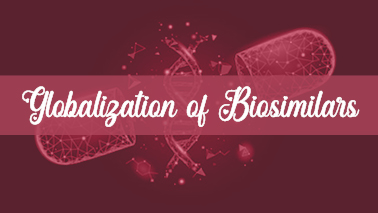
The globalization of biosimilars refers to the development, manufacturing, and distribution of biosimilars across multiple regions and countries.
Here are some of the key aspects of the globalization of biosimilars:
Regulatory harmonization: Regulatory harmonization is a critical aspect of the globalization of biosimilars. It involves the development of consistent regulatory standards and requirements for biosimilars across different regions and countries. This is important for ensuring that biosimilars are safe and effective, and can be approved and marketed efficiently.
Intellectual property: Intellectual property is another important aspect of the globalization of biosimilars. Biosimilars are often developed by different companies and organizations in different regions and countries. The protection of intellectual property rights is critical to ensuring that companies can invest in and profit from the development and manufacturing of biosimilars.
Supply chain management: Supply chain management is critical to the globalization of biosimilars. The manufacturing and distribution of biosimilars require complex supply chains involving multiple suppliers, distributors, and logistics partners. Effective supply chain management is important for ensuring that biosimilars are manufactured and distributed efficiently and cost-effectively.
Market access: Market access is a key consideration in the globalization of biosimilars. Different regions and countries have different regulatory, reimbursement, and pricing systems that can impact the availability and adoption of biosimilars. It is important to ensure that biosimilars are accessible and affordable to patients across different regions and countries.
Education and awareness: Education and awareness are important for the globalization of biosimilars. Healthcare providers, patients, and policymakers need to be educated on the benefits and risks of biosimilars, and be made aware of the latest developments in the field. This can help to facilitate the adoption and uptake of biosimilars across different regions and countries.
In summary, the globalization of biosimilars is an important aspect of the development and commercialization of these important therapeutic agents. Regulatory harmonization, intellectual property, supply chain management, market access, and education and awareness are some of the key aspects that need to be addressed to ensure that biosimilars are safe, effective, and accessible to patients across different regions and countries.
Global Market:
As an AI language model, I do not have access to real-time market data or financial information. However, I can provide you with some general information on the globalization of biosimilars and their global market.
Biosimilars are biologic products that are highly similar to reference biologics and are used to treat a range of chronic and life-threatening diseases such as cancer, autoimmune disorders, and infectious diseases. The development and approval of biosimilars involve extensive testing and regulatory approval, and they offer a more cost-effective alternative to the original biologics.
The global market for biosimilars is expected to grow significantly in the coming years, driven by factors such as the increasing demand for cost-effective treatment options, the rising prevalence of chronic diseases, and the growing focus on personalized medicine.
One of the key drivers of the globalization of biosimilars is the increasing harmonization of regulatory requirements across different countries. Regulatory bodies such as the FDA in the United States, the EMA in Europe, and the PMDA in Japan have established guidelines and regulations for the approval of biosimilars, which have helped to standardize the approval process and increase the global acceptance of biosimilars.
Another important factor in the globalization of biosimilars is the increasing use of international partnerships and collaborations. Many companies are forming partnerships with other companies or academic institutions to develop and manufacture biosimilars, which has helped to increase the availability and affordability of biosimilars in different regions of the world.
Currently, Europe is the largest market for biosimilars, followed by North America and Asia Pacific. However, the Asia Pacific region is expected to witness significant growth in the coming years, driven by factors such as the increasing focus on cost-effective treatment options and the growing demand for biologics.
Some of the key players in the global biosimilars market include Pfizer, Inc., Amgen Inc., Novartis International AG, Roche Holding AG, and Teva Pharmaceutical Industries Ltd.
Tags
Rare Disease Conferences
Biosimilars and Biologics Conferences
Biosimilar Conferences 2024 Asia
Biosimilar Conferences 2024
Intellectual Property Rights Conferences
Generic Drug Conferences 2024
Biologics Conferences 2024 Europe
Medical Devices and Diagnostics Conferences
Legislative and Regulatory Pathways for Biosimilars Conferences
Generic Drug Conferences
Biosimilar Conferences 2024 Europe
Precision Medicine Conferences
Pharmacokinetics and Pharmacodynamics of Biologics Conferences
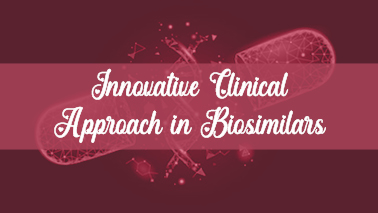
Innovative clinical approaches are important for the development and evaluation of biosimilars.
Here are some of the innovative clinical approaches that are being explored in the development of biosimilars:
Extrapolation: Extrapolation is the use of data from one indication to support the approval of a biosimilar in another indication. This approach is based on the concept that the mechanism of action and safety profile of the biosimilar will be similar across different indications. Extrapolation can help to reduce the time and cost of clinical development for biosimilars.
Switching studies: Switching studies are clinical trials that evaluate the safety and efficacy of switching patients from a reference biologic to a biosimilar. These studies can help to provide data on the safety and efficacy of biosimilars in real-world clinical settings.
Immunogenicity assessment: Immunogenicity is a key concern in the development of biosimilars. Innovative approaches to immunogenicity assessment, such as the use of in silico and in vitro assays, can help to predict the immunogenicity of biosimilars and reduce the need for extensive clinical studies.
Patient-reported outcomes: Patient-reported outcomes are measures of the impact of a disease or treatment on patients' quality of life and functional status. The inclusion of patient-reported outcomes in clinical studies can help to provide a more comprehensive assessment of the benefits and risks of biosimilars.
Adaptive trial designs: Adaptive trial designs are clinical trial designs that allow for modifications to the trial protocol during the course of the study. These designs can help to optimize the clinical development of biosimilars by allowing for adjustments to the trial design based on early trial data.
Real-world evidence: Real-world evidence is data collected from real-world clinical settings, such as electronic health records and claims databases. The use of real-world evidence can help to supplement clinical trial data and provide additional information on the safety and efficacy of biosimilars in real-world settings.
In summary, innovative clinical approaches are important for the development and evaluation of biosimilars. Extrapolation, switching studies, immunogenicity assessment, patient-reported outcomes, adaptive trial designs, and real-world evidence are some of the innovative approaches that are being explored in the clinical development of biosimilars. These approaches can help to optimize the clinical development of biosimilars and ensure that they are safe, effective, and accessible to patients.
Global Market:
As an AI language model, I do not have access to real-time market data or financial information. However, I can provide you with some general information on the innovative clinical approaches in biosimilars and their global market.
Biosimilars are highly similar to reference biologic products and are used to treat a range of chronic and life-threatening diseases such as cancer, autoimmune disorders, and infectious diseases. The development and approval of biosimilars involve extensive testing and regulatory approval, and they offer a more cost-effective alternative to the original biologics.
Innovative clinical approaches in biosimilars include various strategies that aim to improve the development and approval process, increase patient access, and enhance the overall safety and efficacy of biosimilars.
One such approach is the use of "totality of evidence" or "stepwise approach" in the development and approval of biosimilars. This approach involves a thorough evaluation of the biosimilar product using a combination of analytical, non-clinical, and clinical data to establish its similarity to the reference product. This approach can help to ensure the safety and efficacy of biosimilars and increase their acceptance by regulatory authorities.
Another innovative approach in biosimilars is the use of real-world evidence (RWE) to support their development and approval. RWE refers to data collected from routine clinical practice or observational studies, which can provide insights into the safety and effectiveness of biosimilars in real-world settings.
The use of innovative clinical trial designs, such as adaptive trial designs and patient-centric trial designs, is also gaining traction in the development of biosimilars. These designs can help to reduce the time and cost of clinical trials, improve patient recruitment and retention, and enhance the overall efficiency of the development process.
The global market for biosimilars is expected to grow significantly in the coming years, driven by factors such as the increasing demand for cost-effective treatment options, the rising prevalence of chronic diseases, and the growing focus on personalized medicine. Some of the key players in the global biosimilars market include Pfizer, Inc., Amgen Inc., Novartis International AG, Roche Holding AG, and Teva Pharmaceutical Industries Ltd.
Tags
Rare Disease Conferences
Biosimilar Conferences 2024 Asia
Biosimilar Conferences 2024
Pharmacokinetics and Pharmacodynamics of Biologics Conferences
Biosimilar Conferences 2024 USA
Generic Drug Conferences
Legislative and Regulatory Pathways for Biosimilars Conferences
Biologics Conferences 2024 Asia
Biosimilar Medicine Conferences
Biologics Conferences 2024
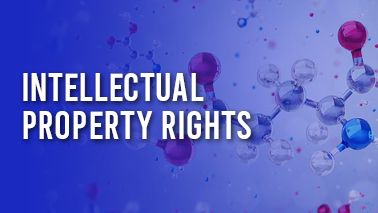
Intellectual property (IP) rights are a critical aspect of the development and commercialization of biosimilars.
Here are some key considerations related to IP rights in biosimilars:
Patents: Patents are a key component of IP rights in biosimilars. The development and manufacturing of biosimilars can infringe on the patents of the reference biologics. To avoid patent infringement, biosimilar developers need to conduct a thorough patent analysis to identify any relevant patents and design their development and manufacturing processes to avoid infringing on those patents. In some cases, biosimilar developers may need to obtain a license or enter into a settlement agreement with the patent holder to avoid infringement.
Data exclusivity: Data exclusivity is another important aspect of IP rights in biosimilars. Data exclusivity refers to the period of time during which the regulatory agency does not accept an application for a biosimilar approval that relies on data from the reference biologic. This period of data exclusivity varies by region, but can be as long as 12 years in the United States. Biosimilar developers need to wait until the data exclusivity period expires before they can submit their application for approval.
Trade secrets: Trade secrets are another type of IP rights that can be relevant in the development and manufacturing of biosimilars. Biosimilar developers need to be careful not to obtain or use any trade secret information from the reference biologic manufacturer, as this could be considered a violation of trade secret law.
Regulatory exclusivity: Regulatory exclusivity is another type of IP right that is relevant in biosimilars. Regulatory exclusivity refers to the period of time during which the regulatory agency does not approve any other biosimilar or biologic that relies on the same data. Regulatory exclusivity is often shorter than data exclusivity and varies by region.
In summary, IP rights are a critical aspect of the development and commercialization of biosimilars. Patents, data exclusivity, trade secrets, and regulatory exclusivity are some of the key types of IP rights that biosimilar developers need to consider. By understanding and respecting IP rights, biosimilar developers can avoid legal challenges and successfully bring their biosimilars to market.
Global Market:
As an AI language model, I can provide you with some general information on the global market for intellectual property rights (IPR).
Intellectual property rights refer to the legal rights that protect the creations of the human mind, such as patents, trademarks, copyrights, and trade secrets. IPRs play a crucial role in promoting innovation, creativity, and economic growth by providing incentives for individuals and companies to invest in research and development and to commercialize their inventions and creations.
The global market for intellectual property rights is vast and diverse, encompassing various industries such as pharmaceuticals, biotechnology, software, entertainment, and fashion. The value of IPRs can vary significantly depending on the industry and the type of intellectual property right.
In the pharmaceutical and biotechnology industries, for example, patents are a crucial form of IPR that protect the exclusive rights of companies to manufacture and sell their drugs for a certain period. Patents are essential for companies to recoup their investment in research and development and to fund future innovation. However, the process of obtaining and enforcing patents can be complex and time-consuming, and companies must navigate various legal and regulatory hurdles to protect their intellectual property.
In the software and technology industries, copyrights and trademarks are important forms of IPR that protect the original works of creators and the brand identity of companies. In these industries, IPRs can be used to prevent others from copying or using their intellectual property without permission or compensation.
The global market for IPRs is highly competitive, and companies often engage in various strategies to protect and enforce their rights. Some companies may file multiple patents for the same invention or acquire patents from other companies to strengthen their intellectual property portfolio. Others may engage in litigation or licensing agreements to protect their rights or generate revenue from their intellectual property.
In conclusion, the global market for intellectual property rights is a complex and dynamic landscape that plays a vital role in promoting innovation, creativity, and economic growth across various industries.
Tags
Biologics Conferences 2024
Biosimilars and Biologics Conferences
Biosimilar Conferences 2024 Europe
Biosimilar Conferences
Generic Drug Conferences 2024
Biosimilar Medicine Conferences
Medical Devices and Diagnostics Conferences
Generic Drug Conferences
Pharmacokinetics and Pharmacodynamics of Biologics Conferences
Biosimilar Conferences 2024
Biosimilar Conferences 2024 Asia
Intellectual Property Rights Conferences
Biologics Conferences 2024 Asia
Rare Disease Conferences

Regulatory updates on biosimilars are an important aspect of the development and commercialization of these products.
Here are some of the key regulatory updates on biosimilars:
FDA guidance: The US Food and Drug Administration (FDA) has issued a number of guidance documents related to biosimilars. These documents provide information on the regulatory requirements for biosimilars, including the data that is required to demonstrate biosimilarity and the process for demonstrating interchangeability with a reference product.
EU regulations: The European Medicines Agency (EMA) has established a regulatory framework for biosimilars. The regulations require that biosimilars demonstrate similarity to a reference product in terms of quality, safety, and efficacy. The EMA has also provided guidance on the clinical development of biosimilars.
International harmonization: The International Council for Harmonisation of Technical Requirements for Pharmaceuticals for Human Use (ICH) has developed guidelines for the development of biosimilars. These guidelines provide a globally harmonized approach to the regulatory requirements for biosimilars.
Patent issues: Biosimilars are subject to patent laws, and patent disputes can impact their development and commercialization. Many countries have established patent laws specific to biosimilars, and there have been several high-profile patent disputes related to biosimilars.
Real-world evidence: Real-world evidence is becoming increasingly important in the regulation of biosimilars. Real-world evidence includes data from sources such as electronic health records, claims databases, and patient registries. This data can provide valuable information on the safety and effectiveness of biosimilars in real-world settings.
In summary, regulatory updates on biosimilars are an important aspect of their development and commercialization. The FDA and EMA have issued guidance on the regulatory requirements for biosimilars, and international harmonization efforts are ongoing. Patent issues and real-world evidence are also important considerations in the regulation of biosimilars.
Global Market:
The regulatory landscape for biosimilars is constantly evolving, with updates and changes being made by regulatory agencies around the world. Here are some recent regulatory updates on biosimilars in the global market:
European Union (EU): The European Medicines Agency (EMA) has updated its guidance on the quality requirements for biosimilars, emphasizing the importance of analytical comparability and the need for extensive physicochemical and biological characterization. In addition, the EMA has revised its guidelines on clinical trials for biosimilars, with the aim of reducing the need for unnecessary clinical trials and facilitating the development of biosimilars for rare diseases.
United States (US): In 2020, the Food and Drug Administration (FDA) released a guidance on the clinical immunogenicity considerations for biosimilar and interchangeable products, providing recommendations for assessing the potential clinical impact of immunogenicity on safety, efficacy, and quality. The FDA has also published guidance on interchangeability of biosimilars, outlining the requirements for demonstrating interchangeability with the reference product.
Japan: In 2021, the Japanese Ministry of Health, Labor, and Welfare (MHLW) revised its guidelines on the development and review of biosimilars, with the aim of encouraging the development of high-quality biosimilars and improving access to affordable biologic therapies for patients.
South Korea: The South Korean Ministry of Food and Drug Safety (MFDS) has introduced a fast-track approval pathway for biosimilars, allowing manufacturers to receive expedited approval for biosimilars that have demonstrated similarity to the reference product in terms of quality, efficacy, and safety.
Australia: In 2020, the Therapeutic Goods Administration (TGA) updated its guidelines for biosimilars, providing clarity on the requirements for demonstrating biosimilarity and interchangeability, as well as the use of nonclinical studies to support the development of biosimilars.
In conclusion, regulatory agencies around the world are continuing to refine their guidelines and regulations for the development and approval of biosimilars. These updates are aimed at improving the quality, safety, and efficacy of biosimilars, while also facilitating their development and reducing the cost of biologic therapies for patients.
Tags
Biologics Conferences 2024 Asia
Rare Disease Conferences
Generic Drug Conferences
Precision Medicine Conferences
Intellectual Property Rights Conferences
Legislative and Regulatory Pathways for Biosimilars Conferences
Biosimilar Medicine Conferences
Biosimilar Conferences 2024 Europe
Biologics Conferences 2024 Europe
Biosimilar Conferences
Biosimilar Conferences 2024
Medical Devices and Diagnostics Conferences
Generic Drug Conferences 2024
Pharmacokinetics and Pharmacodynamics of Biologics Conferences
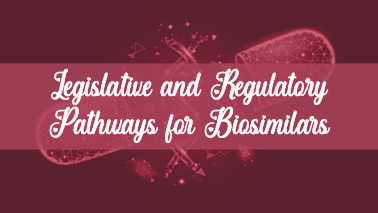
Biosimilars are highly regulated products, and there are several legislative and regulatory pathways that govern their development, approval, and commercialization.
Here are some of the key legislative and regulatory pathways for biosimilars:
Biologics Price Competition and Innovation Act (BPCIA): In the United States, the BPCIA is the primary legislation that governs the approval and regulation of biosimilars. The BPCIA was passed in 2009 and provides a framework for the approval and regulation of biosimilars. The BPCIA establishes an abbreviated pathway for the approval of biosimilars and sets out requirements for biosimilar developers to demonstrate biosimilarity to the reference biologic.
European Medicines Agency (EMA): The EMA is the regulatory agency that governs the approval and regulation of biosimilars in the European Union (EU). The EMA has established a centralized approval process for biosimilars, which requires biosimilar developers to provide data demonstrating biosimilarity to the reference biologic.
World Health Organization (WHO): The WHO has established guidelines for the evaluation of biosimilars, which provide a framework for the evaluation and regulation of biosimilars. The WHO guidelines cover issues such as the quality, safety, and efficacy of biosimilars and provide recommendations for the evaluation of biosimilars in different therapeutic areas.
Health Canada: Health Canada is the regulatory agency that governs the approval and regulation of biosimilars in Canada. Health Canada has established a regulatory pathway for the approval of biosimilars, which requires biosimilar developers to provide data demonstrating similarity to the reference biologic.
Biosimilar User Fee Act (BsUFA): The BsUFA is a piece of legislation in the United States that provides funding for the FDA to review biosimilar applications. The BsUFA requires biosimilar developers to pay fees to support the FDA's review of biosimilar applications.
In summary, there are several legislative and regulatory pathways that govern the development, approval, and commercialization of biosimilars. These pathways include the BPCIA in the United States, the EMA in the EU, the WHO, Health Canada, and the BsUFA in the United States. By complying with these pathways, biosimilar developers can ensure that their products are safe, effective, and accessible to patients.
Global Market:
As an AI language model, I can provide you with some general information on the legislative and regulatory pathways for biosimilars in the global market.
Biosimilars are regulated by different regulatory agencies around the world, including the US Food and Drug Administration (FDA), the European Medicines Agency (EMA), and the World Health Organization (WHO). These agencies have established regulatory pathways that define the requirements for the development, approval, and marketing of biosimilars.
In the United States, the Biologics Price Competition and Innovation Act (BPCIA) of 2009 established an abbreviated pathway for the approval of biosimilars, known as the 351(k) pathway. This pathway requires biosimilar sponsors to demonstrate that their product is highly similar to the reference product in terms of structure, function, and clinical performance, and that there are no clinically meaningful differences between the two products in terms of safety, purity, and potency. The FDA has approved over 30 biosimilars through this pathway since 2015.
In the European Union (EU), the regulatory pathway for biosimilars is based on the concept of comparability, which requires biosimilar sponsors to demonstrate that their product has a similar quality, safety, and efficacy profile to the reference product. The EMA has approved over 70 biosimilars through this pathway since 2006.
Other countries and regions, such as Japan, South Korea, and Latin America, have also established regulatory pathways for the approval of biosimilars. These pathways generally follow the principles of the FDA and EMA regulatory frameworks and require biosimilar sponsors to provide robust scientific data to demonstrate the similarity and safety of their products.
Legislative and regulatory frameworks for biosimilars continue to evolve as the demand for these products grows and as new scientific and technological advancements emerge. For example, some countries are exploring the use of real-world evidence and adaptive trial designs to support the development and approval of biosimilars. Additionally, some regulatory agencies are considering the use of interchangeability designations, which would allow biosimilars to be substituted for reference products without the need for additional clinical evaluation.
In conclusion, the legislative and regulatory pathways for biosimilars in the global market are complex and dynamic, and require biosimilar sponsors to navigate various legal and regulatory requirements to bring their products to market.
Tags
Biologics Conferences 2024 Asia
Biosimilar Conferences 2024
Precision Medicine Conferences
Biosimilar Conferences 2024 Asia
Biosimilar Conferences 2024 USA
Medical Devices and Diagnostics Conferences
Intellectual Property Rights Conferences
Legislative and Regulatory Pathways for Biosimilars Conferences
Biosimilar Conferences 2024 Europe
Biosimilar Medicine Conferences
Biologics Conferences 2024
Rare Disease Conferences
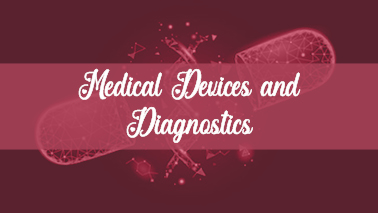
Medical devices and diagnostics are tools and instruments that are used in healthcare to diagnose, treat, or prevent diseases and medical conditions. These products range from simple devices like thermometers and blood glucose meters to complex technologies like MRI machines and surgical robots.
Here are some key considerations related to medical devices and diagnostics:
Regulatory pathways: Medical devices and diagnostics are highly regulated products, and there are several regulatory pathways that govern their development, approval, and commercialization. In the United States, the FDA is the regulatory agency that oversees the approval of medical devices and diagnostics, and there are different regulatory pathways depending on the risk level of the device. In the European Union, the regulatory agency that oversees medical devices and diagnostics is the European Medicines Agency (EMA), and there are also different regulatory pathways depending on the risk level of the device.
Product development: The development of medical devices and diagnostics involves several stages, including concept development, design and engineering, testing and validation, and regulatory approval. Medical device and diagnostic manufacturers need to ensure that their products are safe and effective, and that they meet the regulatory requirements for approval.
Market access: Once a medical device or diagnostic has been approved, it needs to be made available to patients and healthcare providers. This involves developing marketing and sales strategies, ensuring that the product is available through appropriate distribution channels, and establishing reimbursement arrangements with insurance providers.
Post-market surveillance: Medical devices and diagnostics need to be monitored after they are approved and launched to ensure that they continue to be safe and effective. This involves collecting data on adverse events, conducting post-market studies, and making any necessary updates or changes to the product.
In summary, medical devices and diagnostics are highly regulated products that require careful development, testing, and regulatory approval. Manufacturers need to ensure that their products are safe and effective, and that they meet the regulatory requirements for approval. Once approved, medical devices and diagnostics need to be made available to patients and healthcare providers, and they need to be monitored for safety and effectiveness through post-market surveillance activities.
Global Market:
As an AI language model, I can provide you with some general information on the global market for medical devices and diagnostics.
The medical devices and diagnostics market is a diverse and growing industry that encompasses a wide range of products, including surgical instruments, diagnostic imaging equipment, implantable devices, and in vitro diagnostics (IVDs). These products are used to prevent, diagnose, treat, and monitor various medical conditions and diseases.
The global market for medical devices and diagnostics is projected to grow at a steady rate in the coming years, driven by factors such as an aging population, the increasing prevalence of chronic diseases, and technological advancements. According to a report by Grand View Research, the global medical devices market is expected to reach USD 671.49 billion by 2028, while the global IVD market is expected to reach USD 97.57 billion by 2025.
The market is highly competitive and fragmented, with numerous small and large players operating in various segments. Some of the leading companies in the market include Medtronic, Abbott Laboratories, Siemens Healthineers, Johnson & Johnson, and Roche Diagnostics.
Regulatory requirements and standards vary across different regions, with the US FDA, European Union, and Japan being some of the major regulatory bodies. These regulatory bodies ensure that medical devices and diagnostics meet safety and effectiveness standards before they can be marketed.
The COVID-19 pandemic has also had a significant impact on the medical devices and diagnostics market, with increased demand for diagnostic tests and medical equipment such as ventilators and personal protective equipment (PPE). The pandemic has also accelerated the adoption of telemedicine and digital health technologies, which are expected to continue to grow in the coming years.
In conclusion, the medical devices and diagnostics market is a dynamic and diverse industry that is projected to grow in the coming years, driven by various factors such as an aging population, technological advancements, and increasing prevalence of chronic diseases. The market is highly competitive and regulated, with numerous small and large players operating in various segments.
Tags
Biosimilar Conferences 2024
Biosimilar Medicine Conferences
Legislative and Regulatory Pathways for Biosimilars Conferences
Biologics Conferences 2024 Europe
Rare Disease Conferences
Medical Devices and Diagnostics Conferences
Biosimilar Conferences 2024 Asia
Intellectual Property Rights Conferences
Biosimilars and Biologics Conferences
Biosimilar Conferences 2024 Europe
Generic Drug Conferences

Monoclonal antibodies (mAbs) are a class of biologic drugs that are widely used to treat a variety of diseases, including cancer, autoimmune disorders, and infectious diseases. Biosimilars of mAbs are becoming increasingly important as they offer the potential for improved access to important therapies and cost savings.
Here are some key considerations related to monoclonal antibody biosimilars:
Development: Developing a biosimilar of a mAb is a complex and challenging process, due in part to the size and complexity of these molecules. Biosimilar developers need to demonstrate similarity to the reference product in terms of structure, function, and clinical efficacy and safety.
Clinical trials: Clinical trials are an important part of the development process for monoclonal antibody biosimilars. Clinical trials are typically designed to compare the safety and efficacy of the biosimilar to the reference product in a representative patient population.
Regulatory approval: Regulatory approval of monoclonal antibody biosimilars is governed by a number of regulatory authorities, including the US Food and Drug Administration (FDA), the European Medicines Agency (EMA), and others. Regulatory authorities evaluate data from preclinical and clinical studies to determine whether the biosimilar is sufficiently similar to the reference product to be approved for use.
Naming: The naming of monoclonal antibody biosimilars is an important consideration, as it can affect their uptake and use. Naming conventions for biosimilars are evolving, and there is ongoing debate about whether biosimilars should have distinct non-proprietary names or share a common non-proprietary name with the reference product.
Market access: Once approved, monoclonal antibody biosimilars need to be made available to patients and healthcare providers. This involves developing marketing and sales strategies, ensuring that the product is available through appropriate distribution channels, and establishing reimbursement arrangements with insurance providers.
In summary, monoclonal antibody biosimilars offer the potential for improved access to important therapies and cost savings, but developing, testing, and regulatory approval of these products is complex and challenging. Biosimilar developers need to demonstrate similarity to the reference product in terms of structure, function, and clinical efficacy and safety, and there are ongoing discussions around the naming and market access for these products.
Global Market:
As an AI language model, I can provide you with some general information on the global market for monoclonal antibody (mAb) biosimilars.
Monoclonal antibody biosimilars are biological products that are highly similar to reference monoclonal antibodies, but are manufactured by different companies. These products are intended to be as safe and effective as the reference products, but at a lower cost, which can increase access to these important therapies.
The global market for monoclonal antibody biosimilars is growing rapidly, driven by factors such as patent expirations of reference products, increasing demand for these therapies, and favorable regulatory policies. According to a report by Grand View Research, the global monoclonal antibody biosimilars market is expected to reach USD 18.9 billion by 2028, growing at a compound annual growth rate (CAGR) of 28.7% from 2021 to 2028.
The market is highly competitive, with numerous companies developing and marketing monoclonal antibody biosimilars. Some of the leading players in the market include Pfizer, Samsung Bioepis, Amgen, Biocon, and Celltrion.
Regulatory pathways for the approval of monoclonal antibody biosimilars vary across different regions, but generally follow the principles of comparability and similarity to the reference product. In the United States, the FDA has approved several monoclonal antibody biosimilars through the 351(k) pathway, including biosimilars of infliximab, adalimumab, and rituximab. In the European Union, the EMA has approved several monoclonal antibody biosimilars through the centralized procedure, including biosimilars of rituximab, trastuzumab, and bevacizumab.
The COVID-19 pandemic has also had an impact on the monoclonal antibody biosimilars market, with the development and approval of biosimilars for COVID-19 treatments, such as tocilizumab and sotrovimab, being accelerated.
In conclusion, the global market for monoclonal antibody biosimilars is a rapidly growing and competitive industry, driven by factors such as patent expirations, increasing demand, and favorable regulatory policies. The market is expected to continue to grow in the coming years, with increasing adoption of these therapies and the development of biosimilars for new indications.
Tags
Biosimilar Medicine Conferences
Biosimilar Conferences 2024 Asia
Generic Drug Conferences 2024
Intellectual Property Rights Conferences
Medical Devices and Diagnostics Conferences
Biologics Conferences 2024 Europe
Biosimilar Conferences
Biologics Conferences 2024 Asia
Biosimilar Conferences 2024 USA
Legislative and Regulatory Pathways for Biosimilars Conferences
Rare Disease Conferences
Generic Drug Conferences
Biosimilar Conferences 2024

Nutrition economics is a field that examines the economic factors that influence the production, distribution, and consumption of food and nutrition-related products. While the field of nutrition economics is primarily focused on food and dietary supplements, there are also important economic considerations related to biosimilars.
Here are some key considerations related to nutrition economics and biosimilars:
Cost-effectiveness: One of the primary economic considerations related to biosimilars is their cost-effectiveness. Biosimilars are expected to be less expensive than their reference products, and this can lead to significant cost savings for patients, healthcare providers, and insurance providers. Cost-effectiveness analyses are often used to evaluate the relative value of biosimilars compared to reference products.
Market competition: The availability of biosimilars can increase market competition, which can in turn influence pricing and access to therapies. Increased competition can lead to lower prices, which can increase access to therapies for patients.
Reimbursement: Reimbursement policies and practices also play a role in the economics of biosimilars. Insurance providers and healthcare systems need to determine how they will reimburse for biosimilars, and this can have a significant impact on patient access to these products.
Supply chain: The supply chain for biosimilars is an important economic consideration, as it can affect the availability and cost of these products. Manufacturers need to ensure that they have the capacity to produce biosimilars at scale, and that they are able to distribute these products efficiently to ensure that patients have timely access.
Patient education: Patient education is also an important economic consideration in the context of biosimilars. Patients need to understand the benefits and risks of biosimilars, and they need to be able to make informed decisions about their use. Patient education efforts can help to ensure that patients are able to access and use biosimilars in a safe and effective manner.
In summary, nutrition economics plays an important role in the development, approval, and use of biosimilars. Cost-effectiveness, market competition, reimbursement, supply chain, and patient education are all important economic considerations in the context of biosimilars. By considering these factors, stakeholders can work to ensure that patients have timely access to safe and effective biosimilars at an affordable cost.
Global Market:
As an AI language model, I can provide you with some general information on the global market for nutrition economics.
Nutrition economics is a field that explores the economic and social factors that influence food choices and their impact on health outcomes. It involves the study of how food production, distribution, and consumption affect economic growth and development, as well as the health and well-being of populations.
The global market for nutrition economics is growing, driven by factors such as increasing awareness of the importance of nutrition for health and well-being, rising healthcare costs, and the need for evidence-based policies to promote healthy diets. According to a report by MarketsandMarkets, the global market for nutrition economics is expected to reach USD 1.6 billion by 2025, growing at a compound annual growth rate (CAGR) of 9.3% from 2020 to 2025.
The market is highly fragmented, with numerous small and large players operating in various segments. Some of the leading companies in the market include Danone, Nestle, PepsiCo, Coca-Cola, and Abbott Laboratories.
Government policies and regulations play a significant role in shaping the global nutrition economics market. These policies range from regulations on food labeling and advertising to subsidies and taxation of certain foods. In addition, private sector initiatives and consumer preferences also influence the market.
The COVID-19 pandemic has also had an impact on the nutrition economics market, with increasing focus on the role of nutrition in supporting immune function and overall health. The pandemic has also highlighted the importance of resilient food systems and the need for sustainable food production and distribution.
In conclusion, the global market for nutrition economics is a growing and dynamic industry, driven by various factors such as increasing awareness of the importance of nutrition, rising healthcare costs, and the need for evidence-based policies to promote healthy diets. The market is highly fragmented and influenced by government policies, private sector initiatives, and consumer preferences.
Tags
Biosimilar Medicine Conferences
Biosimilar Conferences 2024 Europe
Intellectual Property Rights Conferences
Legislative and Regulatory Pathways for Biosimilars Conferences
Pharmacokinetics and Pharmacodynamics of Biologics Conferences
Biosimilar Conferences 2024
Biologics Conferences 2024
Biosimilar Conferences
Biologics Conferences 2024 Asia
Biosimilars and Biologics Conferences
Biologics Conferences 2024 Europe
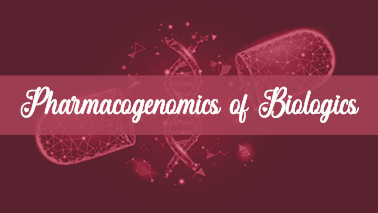
Pharmacogenomics is the study of how an individual's genetic makeup influences their response to drugs. Biologics, as complex proteins and other molecules, can also be influenced by a patient's genetics, and pharmacogenomics can help to personalize the use of these drugs. Here are some key points related to the pharmacogenomics of biologics:
Variations in genes can affect the efficacy and safety of biologics: The way a patient responds to a biologic can be influenced by genetic variations that affect drug metabolism, receptor expression, and other factors. These variations can affect the efficacy and safety of the drug.
Biomarkers can help to identify patients who are likely to respond to a biologic: Biomarkers can be used to identify patients who are likely to respond to a particular biologic. For example, in cancer treatment, the presence of certain biomarkers can help to identify patients who are likely to benefit from treatment with a specific biologic.
Companion diagnostics can help to guide the use of biologics: Companion diagnostics are tests that are used to identify patients who are likely to benefit from a particular drug. In the context of biologics, companion diagnostics can be used to identify patients who are likely to respond to a specific biologic, and to help to guide the use of these drugs.
Personalized medicine can help to optimize the use of biologics: Personalized medicine involves tailoring treatments to individual patients based on their unique characteristics, including their genetic makeup. In the context of biologics, personalized medicine can help to optimize the use of these drugs by identifying patients who are likely to benefit from treatment, and by tailoring the dosing and administration of the drug to the individual patient.
In summary, the pharmacogenomics of biologics is an important area of research that can help to personalize the use of these drugs. Genetic variations can affect the efficacy and safety of biologics, and biomarkers and companion diagnostics can be used to identify patients who are likely to respond to a particular biologic. Personalized medicine approaches can help to optimize the use of biologics by tailoring treatment to individual patients based on their unique characteristics.
Global Market:
As an AI language model, I can provide you with some general information on the global market for pharmacogenomics of biologics.
Pharmacogenomics is the study of how an individual's genetic makeup affects their response to drugs. With the increasing use of biologics, which are large and complex protein-based therapies, the role of pharmacogenomics in optimizing patient outcomes is becoming increasingly important. Pharmacogenomics can help to identify patients who are more likely to respond to certain biologics or experience adverse effects, enabling personalized treatment approaches.
The global market for pharmacogenomics of biologics is growing, driven by factors such as increasing demand for personalized medicine, rising prevalence of chronic diseases, and advances in genomic technologies. According to a report by MarketsandMarkets, the global pharmacogenomics market is expected to reach USD 11.2 billion by 2025, growing at a compound annual growth rate (CAGR) of 8.8% from 2020 to 2025.
The market is highly competitive, with numerous companies developing and marketing pharmacogenomic tests and services. Some of the leading players in the market include Thermo Fisher Scientific, Illumina, QIAGEN, F. Hoffmann-La Roche, and Abbott Laboratories.
Regulatory pathways for the approval of pharmacogenomic tests vary across different regions, but generally follow the principles of safety, effectiveness, and accuracy. In the United States, the FDA has approved several pharmacogenomic tests, including tests for determining patient response to certain biologics, such as infliximab and adalimumab. In the European Union, the EMA has also approved pharmacogenomic tests for use in personalized medicine.
The COVID-19 pandemic has also had an impact on the pharmacogenomics of biologics market, with the development of pharmacogenomic tests and therapies for COVID-19, such as the identification of genetic variants associated with severe disease and the development of biologics for the treatment of COVID-19.
In conclusion, the global market for pharmacogenomics of biologics is a growing and competitive industry, driven by factors such as increasing demand for personalized medicine, rising prevalence of chronic diseases, and advances in genomic technologies. The market is expected to continue to grow in the coming years, with increasing adoption of pharmacogenomic testing and personalized treatment approaches.
Tags
Legislative and Regulatory Pathways for Biosimilars Conferences
Biosimilar Conferences
Biologics Conferences 2024 Europe
Biosimilar Conferences 2024 Asia
Biologics Conferences 2024
Biosimilar Conferences 2024 USA
Biosimilar Medicine Conferences
Medical Devices and Diagnostics Conferences
Biologics Conferences 2024 Asia
Precision Medicine Conferences
Pharmacokinetics and Pharmacodynamics of Biologics Conferences
Biosimilar Conferences 2024
Generic Drug Conferences
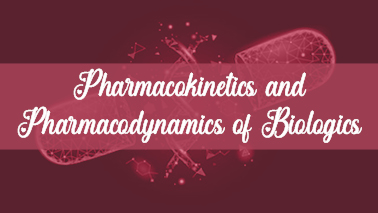
Pharmacokinetics (PK) and pharmacodynamics (PD) are important aspects of drug development and are crucial for understanding how a drug interacts with the body. Biologics, being complex protein molecules, have distinct pharmacokinetic and pharmacodynamic properties that differ from those of small molecule drugs.
Here are some key points related to the PK and PD of biologics:
Pharmacokinetics of biologics: The pharmacokinetics of biologics are influenced by factors such as protein size, charge, and hydrophobicity. Biologics tend to have longer half-lives than small molecule drugs, as they are metabolized and eliminated more slowly by the body. Additionally, biologics can be cleared from the body through multiple pathways, including renal and hepatic clearance.
Pharmacodynamics of biologics: The pharmacodynamics of biologics are complex and can involve multiple mechanisms of action. Biologics can bind to specific receptors, block signaling pathways, or modulate immune responses. The pharmacodynamics of biologics can also be influenced by factors such as dosing and administration.
Dosing and administration of biologics: The dosing and administration of biologics are often determined by their pharmacokinetic and pharmacodynamic properties. For example, some biologics may require more frequent dosing than others due to their shorter half-lives. Additionally, the route of administration of a biologic can influence its pharmacokinetics and pharmacodynamics.
PK/PD modeling of biologics: PK/PD modeling is an important tool for predicting the pharmacokinetics and pharmacodynamics of biologics. PK/PD models can be used to optimize dosing regimens and to predict the clinical efficacy and safety of biologics.
In summary, the pharmacokinetics and pharmacodynamics of biologics are distinct from those of small molecule drugs. Biologics tend to have longer half-lives and are metabolized and eliminated more slowly by the body. The pharmacodynamics of biologics are complex and can involve multiple mechanisms of action. Dosing and administration of biologics are often determined by their pharmacokinetic and pharmacodynamic properties, and PK/PD modeling is an important tool for predicting their clinical efficacy and safety.
Global Market:
As an AI language model, I can provide you with some general information on the global market for pharmacokinetics and pharmacodynamics of biologics.
Pharmacokinetics and pharmacodynamics are the study of how drugs are absorbed, distributed, metabolized, and eliminated by the body (pharmacokinetics), as well as the effects of drugs on the body (pharmacodynamics). Biologics, which are large and complex protein-based therapies, have unique pharmacokinetic and pharmacodynamic properties that require specialized knowledge and tools for their development and optimization.
The global market for pharmacokinetics and pharmacodynamics of biologics is growing, driven by factors such as increasing demand for biologics, the need for more efficient and effective drug development processes, and advances in technology for analyzing and optimizing biologic drug properties. According to a report by MarketsandMarkets, the global market for pharmacokinetics and pharmacodynamics services is expected to reach USD 3.3 billion by 2025, growing at a compound annual growth rate (CAGR) of 12.3% from 2020 to 2025.
The market is highly competitive, with numerous companies offering pharmacokinetic and pharmacodynamic services for biologics development. Some of the leading players in the market include Covance, PPD, Charles River Laboratories, Eurofins Scientific, and WuXi AppTec.
Regulatory pathways for the approval of biologics vary across different regions, but generally follow the principles of safety, efficacy, and quality. The development of pharmacokinetic and pharmacodynamic data is critical for demonstrating the safety and efficacy of biologic drugs and obtaining regulatory approval.
The COVID-19 pandemic has also had an impact on the pharmacokinetics and pharmacodynamics of biologics market, with increased focus on the development of biologics for the treatment of COVID-19 and the need for more efficient drug development processes.
In conclusion, the global market for pharmacokinetics and pharmacodynamics of biologics is a growing and competitive industry, driven by increasing demand for biologics, the need for more efficient and effective drug development processes, and advances in technology for analyzing and optimizing biologic drug properties. The market is expected to continue to grow in the coming years, with increasing adoption of pharmacokinetic and pharmacodynamic services for biologic drug development.
Tags
Pharmacokinetics and Pharmacodynamics of Biologics Conferences
Biosimilar Conferences
Biosimilar Conferences 2024
Biosimilar Conferences 2024 Europe
Medical Devices and Diagnostics Conferences
Legislative and Regulatory Pathways for Biosimilars Conferences
Biologics Conferences 2024
Generic Drug Conferences 2024
Biosimilar Medicine Conferences
Biosimilars and Biologics Conferences
Biologics Conferences 2024 Asia
Generic Drug Conferences

Precision medicine and advanced therapies are rapidly evolving fields that are transforming the way we diagnose and treat diseases.
Here are some key points related to precision medicine and advanced therapies:
Precision medicine: Precision medicine is an approach that takes into account an individual's genetics, environment, and lifestyle to personalize medical care. By using genomic and other data, precision medicine can help tailor treatment plans to an individual's unique needs and improve patient outcomes.
Advanced therapies: Advanced therapies are a group of innovative treatments that include gene therapies, cell therapies, and tissue engineering. These therapies often involve the use of living cells or tissues to repair or replace damaged or diseased tissues.
Gene therapies: Gene therapies involve the use of genetic material to treat or prevent disease. This can include the insertion, deletion, or modification of genes to correct genetic mutations or to enhance the body's ability to fight disease.
Cell therapies: Cell therapies involve the use of living cells to treat disease. This can include the transplantation of stem cells to regenerate damaged tissues or the use of immune cells to target and destroy cancer cells.
Tissue engineering: Tissue engineering involves the use of living cells and biomaterials to create functional tissues for transplantation. This can include the creation of replacement organs or tissues for patients with damaged or diseased organs.
Regulatory challenges: The development and approval of precision medicine and advanced therapies pose unique regulatory challenges due to their complex nature and the need to ensure their safety and efficacy.
Regulatory agencies are working to develop new guidelines and frameworks to address these challenges and accelerate the development and approval of these therapies.
In summary, precision medicine and advanced therapies are transforming the way we diagnose and treat diseases. Precision medicine takes into account an individual's unique genetics, environment, and lifestyle to personalize medical care, while advanced therapies involve the use of living cells or tissues to repair or replace damaged or diseased tissues. These therapies are subject to unique regulatory challenges, but advances in regulatory frameworks are helping to accelerate their development and approval.
Global Market:
Precision medicine and advanced therapies are an emerging field that aims to provide personalized treatment options based on an individual's unique genetic and molecular profile. These therapies include gene therapy, cell therapy, and other advanced technologies that target the underlying cause of disease, rather than just treating symptoms.
The global market for precision medicine and advanced therapies is expected to grow at a rapid pace, driven by increasing investment in research and development, rising prevalence of chronic diseases, and advances in technology. According to a report by MarketsandMarkets, the global market for precision medicine is expected to reach $143.2 billion by 2026, growing at a CAGR of 9.9% from 2021 to 2026.
Gene therapy, one of the key components of precision medicine, has emerged as a promising treatment option for several rare and genetic diseases. The market for gene therapy is expected to grow at a CAGR of 33.7% from 2020 to 2027, according to a report by Allied Market Research. The development of CAR-T cell therapies, which use a patient's own immune cells to fight cancer, is also a rapidly growing area in the field of precision medicine.
The market for advanced therapies is highly competitive, with numerous companies and research organizations investing heavily in the development of these novel treatments. Some of the leading players in the market include Novartis AG, Gilead Sciences Inc., bluebird bio, Inc., Spark Therapeutics, Inc., and Kite Pharma, Inc.
Regulatory pathways for the approval of advanced therapies are well-established in many regions of the world, including the United States and Europe. In the United States, the Food and Drug Administration (FDA) has established a dedicated regulatory pathway for the approval of gene therapy and other advanced therapies, known as the Regenerative Medicine Advanced Therapy (RMAT) designation. The European Medicines Agency (EMA) has also established regulatory pathways for the approval of advanced therapies.
In conclusion, the global market for precision medicine and advanced therapies is growing at a rapid pace, driven by increasing investment in research and development, rising prevalence of chronic diseases, and advances in technology. Gene therapy and CAR-T cell therapies are two rapidly growing areas in the field of precision medicine. The market for advanced therapies is highly competitive, with numerous companies and research organizations investing heavily in the development of these novel treatments. Regulatory pathways for the approval of advanced therapies are well-established in many regions of the world, providing a framework for the development and approval of these innovative treatments.
Tags
Biosimilar Conferences 2024 Asia
Biosimilar Conferences 2024
Rare Disease Conferences
Intellectual Property Rights Conferences
Precision Medicine Conferences
Biologics Conferences 2024
Medical Devices and Diagnostics Conferences
Legislative and Regulatory Pathways for Biosimilars Conferences
Biosimilars and Biologics Conferences
Pharmacokinetics and Pharmacodynamics of Biologics Conferences
Biologics Conferences 2024 Asia
Generic Drug Conferences 2024
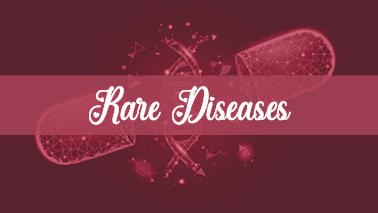
Rare diseases are a group of disorders that affect a small number of people in a population. The exact definition of a rare disease varies by country, but generally, a disease is considered rare if it affects fewer than 1 in 2,000 people.
There are thousands of rare diseases, and collectively, they affect millions of people worldwide. Many rare diseases are genetic, meaning that they are caused by mutations in a person's DNA. Others are caused by environmental factors, infections, or other factors.
Here are some key points related to rare diseases:
Diagnosis: One of the biggest challenges in rare diseases is diagnosis. Many rare diseases are difficult to diagnose because their symptoms can be similar to those of more common diseases. As a result, it can take years for a person to receive an accurate diagnosis.
Treatment: There are often no effective treatments for rare diseases. This is because there is a lack of research into these conditions, and because developing treatments for rare diseases can be expensive.
Orphan drugs: Orphan drugs are drugs that are developed specifically for rare diseases. Because there is a small market for these drugs, they are often expensive. In many cases, governments and non-profit organizations provide funding to help make these drugs more accessible to patients.
Patient advocacy: Patient advocacy groups play an important role in rare diseases. These groups help to raise awareness of rare diseases, provide support to patients and their families, and advocate for research funding and policy changes to improve the lives of people with rare diseases.
Research: Research into rare diseases is critical for developing effective treatments. Many governments and non-profit organizations provide funding for research into rare diseases, and there are many ongoing efforts to identify the genetic and environmental factors that contribute to these conditions.
In summary, rare diseases are a group of disorders that affect a small number of people in a population. Diagnosis and treatment can be challenging, and there is often a lack of effective treatments for these conditions. Orphan drugs, patient advocacy, and research are all important areas of focus for improving the lives of people with rare diseases.
Global Market:
Rare diseases are conditions that affect a small percentage of the population, typically less than 200,000 individuals in the United States and less than 1 in 2,000 individuals in Europe. Despite their rarity, there are over 7,000 known rare diseases, and together they affect an estimated 400 million people worldwide.
The global market for rare diseases is growing rapidly, driven by increasing awareness and understanding of rare diseases, advances in genomics and other fields of science, and the development of targeted therapies. According to a report by ResearchAndMarkets, the global rare disease market is expected to reach $330 billion by 2027, growing at a compound annual growth rate (CAGR) of 13.2% from 2020 to 2027.
The development of therapies for rare diseases is often challenging, as these conditions are often poorly understood and have limited treatment options. However, recent advances in genomics and personalized medicine have opened up new avenues for the development of targeted therapies for rare diseases. These therapies often utilize advanced technologies such as gene therapy, cell therapy, and RNA interference, and are often referred to as "orphan drugs" because they are developed for small patient populations.
The market for orphan drugs is highly competitive, with numerous companies and research organizations investing heavily in the development of therapies for rare diseases. Some of the leading players in the market include Novartis AG, Roche Holding AG, Sanofi S.A., Biogen Inc., and Bristol-Myers Squibb Company.
Regulatory pathways for the approval of orphan drugs are well-established in many regions of the world, including the United States and Europe. In the United States, the Orphan Drug Act of 1983 provides incentives for the development of orphan drugs, including tax credits, research grants, and market exclusivity. The European Medicines Agency (EMA) also provides incentives for the development of orphan drugs, including fee reductions and market exclusivity.
In conclusion, the global market for rare diseases is growing rapidly, driven by increasing awareness and understanding of rare diseases, advances in genomics and personalized medicine, and the development of targeted therapies. The market for orphan drugs is highly competitive, with numerous companies and research organizations investing heavily in the development of therapies for rare diseases. Regulatory pathways for the approval of orphan drugs are well-established in many regions of the world, providing incentives for the development of therapies for these often underserved patient populations.
Tags
Pharmacokinetics and Pharmacodynamics of Biologics Conferences
Biosimilar Conferences
Biosimilar Conferences 2024 USA
Generic Drug Conferences 2024
Biosimilar Conferences 2024 Europe
Biologics Conferences 2024 Europe
Legislative and Regulatory Pathways for Biosimilars Conferences
Biosimilar Conferences 2024
Biosimilar Conferences 2024 Asia
Precision Medicine Conferences
Biosimilars and Biologics Conferences
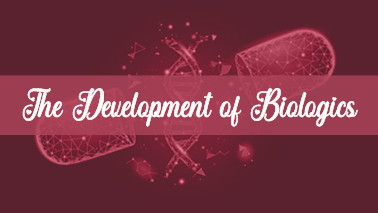
The development of biologics from the perspective of the pharmaceutical industry involves a complex and highly regulated process.
Here are some of the key steps in the development of biologics:
Discovery and research: The development of biologics begins with the identification of a target protein or cell that is involved in a disease process. Researchers then develop a molecule, such as an antibody, that can interact with the target and modulate its activity.
Preclinical testing: Once a candidate molecule has been identified, preclinical testing is conducted to evaluate its safety and efficacy. This testing is typically conducted in cell culture and animal models.
Clinical development: If a molecule passes preclinical testing, it can be evaluated in clinical trials. Clinical development typically involves three phases of testing in humans, with each phase designed to evaluate safety and efficacy in a larger population.
Regulatory approval: Once clinical trials are completed, the pharmaceutical company can apply for regulatory approval. The regulatory agency will review the data from the clinical trials to determine whether the biologic is safe and effective for its intended use.
Manufacturing and commercialization: Once a biologic has been approved, it can be manufactured and marketed. The manufacturing process for biologics is highly complex and typically involves the use of living cells to produce the protein.
Post-market monitoring: Even after a biologic has been approved and is on the market, the pharmaceutical company is required to monitor its safety and efficacy. This monitoring can involve ongoing clinical trials, pharmacovigilance activities, and post-market studies.
From the perspective of the pharmaceutical industry, the development of biologics is a costly and risky process. The high cost of development and the complexity of the manufacturing process contribute to the high cost of biologics. However, the potential benefits of biologics, such as their high efficacy and specificity, make them an important area of focus for many pharmaceutical companies.
Global Market:
The development of biologics is a rapidly growing field, with a global market that is expected to continue to expand in the coming years. Here are some key trends and developments in the global market for biologics:
Increasing demand for biologics: Biologics have become increasingly important in the treatment of a wide range of diseases, including cancer, autoimmune disorders, and rare genetic diseases. As a result, the demand for biologics is growing rapidly, driven by factors such as an aging population, rising prevalence of chronic diseases, and increasing investment in healthcare infrastructure.
Growing pipeline of biologics: The pipeline of biologics is expanding rapidly, with a large number of biologic drugs in development for a wide range of indications. In particular, there has been a significant increase in the number of biosimilars, which are highly similar to approved biologics and can offer lower-cost alternatives to patients.
Advances in technology and manufacturing: Advances in biotechnology and manufacturing are driving innovation in the development and production of biologics. These advances are making it possible to produce more complex biologics, such as cell and gene therapies, which have the potential to transform the treatment of diseases.
Regulatory challenges: The development of biologics is subject to complex regulatory requirements, which can be challenging to navigate. In particular, the development of biosimilars requires extensive analytical, preclinical, and clinical testing to demonstrate similarity to the reference product.
Increasing competition: With the growing number of biologics and biosimilars in development, the market is becoming increasingly competitive. This is putting pressure on developers to demonstrate the value of their products, through clinical trials and real-world evidence, and to develop pricing strategies that are sustainable in the long term.
In conclusion, the global market for biologics is expanding rapidly, driven by increasing demand, growing innovation, and advances in manufacturing technology. As the market continues to grow, developers will need to navigate complex regulatory requirements and increasing competition, while also demonstrating the value of their products to patients, healthcare providers, and payers.
Tags
Biosimilar Conferences 2024 USA
Biosimilars and Biologics Conferences
Generic Drug Conferences 2024
Biosimilar Conferences 2024
Intellectual Property Rights Conferences
Biologics Conferences 2024 Europe
Generic Drug Conferences
Rare Disease Conferences
Biosimilar Conferences
Biosimilar Medicine Conferences
Legislative and Regulatory Pathways for Biosimilars Conferences
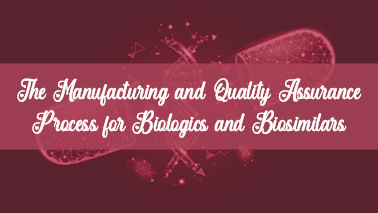
Biologics are complex drugs that are derived from living organisms, such as cells or tissues. Biosimilars, on the other hand, are drugs that are highly similar to an already approved biologic. Both biologics and biosimilars require a rigorous manufacturing and quality assurance process to ensure their safety, efficacy, and consistency.
Manufacturing Process for Biologics:
1.Cell line development: Biologics are produced by living cells, and so the first step is to identify and develop a suitable cell line that can produce the desired protein.
2.Fermentation: The cells are grown in bioreactors under carefully controlled conditions to produce the desired protein.
3.Purification: The protein is then purified from the mixture of cells and other proteins that were produced during fermentation.
4.Formulation: The purified protein is then formulated into the final drug product.
5.Fill and finish: The final drug product is filled into vials or syringes, and then undergoes final finishing steps such as labeling, packaging, and quality control testing.
Quality Assurance Process for Biologics:
1.Analytical testing: The drug substance and drug product undergo extensive analytical testing to ensure the purity, potency, and consistency of the drug.
2.Characterization: The drug is characterized to understand its physical and chemical properties, as well as its mechanism of action.
3.Preclinical testing: The drug undergoes extensive preclinical testing to evaluate its safety and efficacy in animal models.
4.Clinical testing: The drug is then tested in human clinical trials to evaluate its safety and efficacy in humans.
5.Regulatory approval: If the drug successfully completes clinical testing and meets regulatory standards, it can be approved for use by regulatory agencies such as the FDA.
Manufacturing Process for Biosimilars:
The manufacturing process for biosimilars is similar to that of biologics, but there are some key differences:
1.Reference product selection: Biosimilars are designed to be highly similar to an already approved biologic, and so the first step is to select a suitable reference product for comparison.
2.Analytical testing: Biosimilars undergo extensive analytical testing to demonstrate that they are highly similar to the reference product in terms of structure, purity, and potency.
3.Clinical testing: Biosimilars undergo clinical testing to demonstrate that they are as safe and effective as the reference product in the same indications.
Quality Assurance Process for Biosimilars:
The quality assurance process for biosimilars is similar to that of biologics, but with additional requirements for demonstrating similarity to the reference product:
1.Comparative analytical testing: Biosimilars undergo extensive comparative analytical testing to demonstrate that they are highly similar to the reference product.
2.Non-clinical testing: Biosimilars undergo non-clinical testing to demonstrate that they have the same mechanism of action as the reference product.
3.Clinical testing: Biosimilars undergo clinical testing to demonstrate that they are as safe and effective as the reference product in the same indications.
4.Regulatory approval: If the biosimilar successfully completes clinical testing and meets regulatory standards, it can be approved for use by regulatory agencies such as the FDA.
Global Market:
The manufacturing and quality assurance process for biologics and biosimilars is a complex and highly regulated process. Here are some key trends and developments in the global market for biologics manufacturing and quality assurance:
Advanced manufacturing technologies: The use of advanced manufacturing technologies, such as continuous bioprocessing, single-use systems, and process analytics, is increasing in the biologics manufacturing industry. These technologies can improve process efficiency, reduce costs, and enhance product quality.
Quality by design: Quality by design (QbD) is becoming increasingly important in biologics manufacturing, as it provides a systematic approach to developing and manufacturing products with a predefined quality profile. QbD helps to ensure that product quality is built into the manufacturing process, rather than being tested in at the end of the process.
Process analytical technology: Process analytical technology (PAT) is being used to monitor and control biologics manufacturing processes in real time. PAT helps to ensure that the manufacturing process is operating within predefined quality parameters and can provide early warning of potential issues before they impact product quality.
Regulatory requirements: The regulatory requirements for biologics and biosimilars manufacturing are complex and strict. Developers must demonstrate the safety, purity, and potency of their products through extensive testing and documentation.
Quality control and assurance: Quality control and assurance are critical components of biologics manufacturing. Quality control measures, such as in-process testing and final product testing, are used to ensure that products meet predefined quality standards. Quality assurance measures, such as document control and training, are used to ensure that manufacturing processes are consistent and comply with regulatory requirements.
In conclusion, the manufacturing and quality assurance process for biologics and biosimilars is complex and highly regulated. The use of advanced manufacturing technologies, QbD, PAT, and quality control and assurance measures are critical to ensuring that products meet strict regulatory requirements and quality standards. As the biologics manufacturing industry continues to grow and evolve, developers will need to stay up-to-date with the latest trends and developments to remain competitive and compliant with regulatory requirements.
Tags
Biosimilar Conferences 2024 Europe
Legislative and Regulatory Pathways for Biosimilars Conferences
Pharmacokinetics and Pharmacodynamics of Biologics Conferences
Biologics Conferences 2024
Biosimilar Medicine Conferences
Intellectual Property Rights Conferences
Biosimilar Conferences 2024 Asia
Precision Medicine Conferences
Generic Drug Conferences 2024
Biosimilar Conferences
Biosimilar Conferences 2024
Biologics Conferences 2024 Europe

When it comes to biosimilars, variability, stability, and immunogenicity are key factors that must be taken into consideration during their development, manufacturing, and approval process. Let's take a closer look at each of these factors:
Variability: Biosimilars are manufactured using living cells, which can introduce variability into the final product. Therefore, it is important to establish and maintain tight control over the manufacturing process to minimize variability. This includes controlling the raw materials used, the process parameters, and the analytical methods used to characterize the final product. Additionally, biosimilars are compared to the reference product in terms of their physicochemical properties, biological activity, and immunogenicity, to ensure that they are highly similar.
Stability: The stability of a biosimilar refers to its ability to maintain its quality and efficacy over time under various storage conditions. Stability studies are conducted to determine the shelf life and storage conditions of the biosimilar, which must be provided in the product label. Stability studies are conducted under different environmental conditions, such as temperature, humidity, and light exposure, to evaluate the effect of storage on the biosimilar's quality.
Immunogenicity: Biosimilars, like biologics, have the potential to induce an immune response in patients. This is because they are complex molecules that can elicit an immune response, particularly if they are foreign to the patient's immune system. Therefore, biosimilars are evaluated for their immunogenic potential through clinical trials and post-marketing surveillance. This involves monitoring the incidence of adverse events related to immunogenicity, such as infusion reactions, anaphylaxis, and neutralizing antibodies.
In conclusion, variability, stability, and immunogenicity are critical factors that must be considered during the development and approval of biosimilars. Manufacturers must establish and maintain tight control over the manufacturing process to minimize variability, conduct stability studies to determine the product's shelf life, and evaluate the product's immunogenic potential through clinical trials and post-marketing surveillance. By doing so, manufacturers can ensure that biosimilars are safe, effective, and reliable alternatives to reference biologics.
Global Market:
The variability, stability, and immunogenicity of biosimilars are important factors to consider in the global market. Here are some key trends and developments in these areas:
Variability: Biosimilars may exhibit variability due to differences in their manufacturing process compared to the reference product. Variability can impact the safety and efficacy of biosimilars, and therefore, manufacturers need to demonstrate that any differences are within acceptable limits. Advances in analytical technologies, such as mass spectrometry and bioassays, are helping to characterize and control variability.
Stability: Biosimilars must be stable throughout their shelf life to ensure consistent quality and safety. Stability testing is required to demonstrate that the biosimilar product is stable under various storage conditions, including temperature and humidity. The development of accelerated stability testing methods can help to reduce the time and cost associated with stability testing.
Immunogenicity: Biosimilars have the potential to induce immune responses in patients, which can impact safety and efficacy. Immunogenicity testing is required to demonstrate that the biosimilar product is not more immunogenic than the reference product. Advances in immunogenicity testing, such as the use of sensitive assays, are helping to improve the accuracy and reliability of these tests.
Post-marketing surveillance: Post-marketing surveillance is critical to monitor the safety and efficacy of biosimilars in the real-world setting. Manufacturers need to establish pharmacovigilance systems to detect and report adverse events associated with their biosimilar products. Regulatory agencies are also conducting post-marketing surveillance to monitor the safety and efficacy of biosimilars.
Education and awareness: Education and awareness initiatives are important to ensure that healthcare professionals and patients understand the benefits and risks of biosimilars. These initiatives can help to increase acceptance and adoption of biosimilars and improve patient outcomes.
In conclusion, variability, stability, and immunogenicity are important factors to consider in the global market for biosimilars. Advances in analytical technologies, stability testing, immunogenicity testing, post-marketing surveillance, and education and awareness initiatives are helping to improve the quality and safety of biosimilars. As the biosimilars market continues to grow, manufacturers will need to continue to invest in these areas to remain competitive and compliant with regulatory requirements.
Tags
Pharmacokinetics and Pharmacodynamics of Biologics Conferences
Intellectual Property Rights Conferences
Medical Devices and Diagnostics Conferences
Generic Drug Conferences
Biosimilar Conferences 2024 Asia
Precision Medicine Conferences
Biosimilar Conferences
Biosimilar Conferences 2024
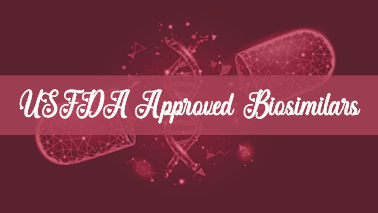
The US Food and Drug Administration (FDA) approves biosimilars through a rigorous regulatory process that includes multiple phases of clinical trials, testing, and evaluations. Here is an overview of the USFDA's approval process for biosimilars:
1.Preclinical Development: The preclinical phase involves extensive laboratory testing to establish the biosimilar's molecular structure, biological activity, and pharmacokinetics. This phase also involves animal studies to assess safety and efficacy.
2.Investigational New Drug (IND) Application: Once the preclinical development is complete, the biosimilar developer submits an IND application to the FDA. The IND application contains information on the biosimilar's safety, efficacy, manufacturing, and clinical trial design.
3.Clinical Trials: The clinical trial phase involves multiple phases of testing in humans to determine safety and efficacy. Phase 1 trials assess safety in a small group of healthy volunteers, while Phase 2 and 3 trials evaluate safety and efficacy in a larger group of patients. The FDA closely monitors the clinical trials and may request additional data or conduct its own analysis.
4.Biologics License Application (BLA) Submission: After completing the clinical trials, the biosimilar developer submits a BLA to the FDA. The BLA includes data on safety, efficacy, manufacturing, and clinical trial results. The FDA reviews the BLA and may request additional information or conduct its own analysis.
5.Approval: If the FDA determines that the biosimilar is safe and effective, it approves the product for commercial use. The biosimilar may be approved for all or only some of the indications of the reference product.
Overall, the USFDA approval process for biosimilars is designed to ensure that these products are safe and effective alternatives to their reference biologic products.
Global Market:
The USFDA (United States Food and Drug Administration) has approved several biosimilars in the global market. Here are some key trends and developments related to USFDA-approved biosimilars:
Growth in the biosimilars market: The USFDA has approved several biosimilars in recent years, which has led to increased competition and lower prices for biologic drugs. Biosimilars have the potential to increase access to life-saving therapies and reduce healthcare costs.
Regulatory framework: The USFDA has developed a regulatory framework for the approval of biosimilars. This framework requires biosimilar manufacturers to demonstrate that their product is highly similar to the reference product and has no clinically meaningful differences in terms of safety and efficacy.
Reference product exclusivity: Reference product manufacturers have exclusivity for a certain period of time, which can limit the availability of biosimilars. However, this exclusivity period has been decreasing, which has led to increased competition and lower prices for biosimilars.
Interchangeability: The USFDA has established guidelines for the interchangeability of biosimilars with the reference product. Interchangeable biosimilars can be substituted for the reference product without the intervention of a healthcare provider. However, no biosimilar has yet been approved as interchangeable in the US.
Post-marketing surveillance: The USFDA requires biosimilar manufacturers to establish pharmacovigilance systems to monitor the safety and efficacy of their products in the real-world setting. The USFDA also conducts post-marketing surveillance to monitor the safety and efficacy of biosimilars.
Education and awareness: The USFDA has launched education and awareness initiatives to increase understanding of biosimilars among healthcare professionals and patients. These initiatives aim to increase acceptance and adoption of biosimilars and improve patient outcomes.
In conclusion, the USFDA has played a key role in the approval and regulation of biosimilars in the global market. The USFDA-approved biosimilars have the potential to increase access to life-saving therapies and reduce healthcare costs. As the biosimilars market continues to grow, the USFDA will need to continue to adapt its regulatory framework to ensure the safety and efficacy of biosimilars while increasing competition and access.
Tags
Medical Devices and Diagnostics Conferences
Biologics Conferences 2024
Biosimilar Conferences 2024
Intellectual Property Rights Conferences
Rare Disease Conferences
Generic Drug Conferences 2024
Biologics Conferences 2024 Europe
Pharmacokinetics and Pharmacodynamics of Biologics Conferences
Precision Medicine Conferences
Biosimilar Medicine Conferences
Biosimilar Conferences 2024 Asia
Biosimilar Conferences
Biosimilars and Biologics Conferences

The COVID-19 pandemic has highlighted the importance of vaccines as biologics and their critical role in public health. Vaccines work by stimulating the immune system to recognize and fight off pathogens, such as viruses or bacteria. They are a vital tool in preventing infectious diseases and have been instrumental in reducing the global burden of infectious diseases.
The development and distribution of COVID-19 vaccines has been a major focus of the biopharmaceutical industry, with numerous companies developing and testing different vaccine candidates. The vaccines use various approaches, such as mRNA technology, viral vector platforms, and protein subunit vaccines.
One of the unique challenges of COVID-19 vaccines is the need for rapid development and large-scale production. Biologics manufacturing typically requires significant time and resources, but the urgency of the pandemic has required a rapid response from the biopharmaceutical industry. Companies have been scaling up their manufacturing capabilities and working with regulatory agencies to expedite the development and approval process.
Another challenge of COVID-19 vaccines is their global distribution. As of now, many low-income countries are facing vaccine shortages, while wealthier countries have a surplus. This highlights the importance of equitable distribution and access to vaccines, particularly for vulnerable populations.
The pandemic has also spurred innovation in vaccine development and manufacturing. The mRNA technology used in the Pfizer and Moderna vaccines, for example, represents a major breakthrough in the field of biologics. The technology has the potential to be used in the development of vaccines for other infectious diseases, as well as for cancer and other diseases.
In conclusion, the COVID-19 pandemic has highlighted the importance of vaccines as biologics in preventing and controlling infectious diseases. The rapid development and distribution of COVID-19 vaccines has demonstrated the potential of the biopharmaceutical industry to respond to public health emergencies, while also highlighting the need for equitable access to vaccines.
Global Market:
The COVID-19 pandemic has highlighted the importance of vaccines as biologics in the global market. Here are some key trends and developments related to vaccines as biologics in the era of the pandemic:
Vaccine development: The COVID-19 pandemic has spurred unprecedented efforts to develop vaccines in record time. Several vaccines have been developed and approved for emergency use, including mRNA-based vaccines, adenovirus-based vaccines, and inactivated virus vaccines.
Manufacturing challenges: The rapid development and scale-up of vaccine manufacturing has posed challenges for the biopharmaceutical industry. Vaccine manufacturers have had to rapidly scale up production to meet global demand, while ensuring the safety and quality of their products.
Distribution and access: The global distribution of vaccines has also been challenging, with many countries facing limited supply and distribution challenges. This has led to calls for greater global cooperation and equitable access to vaccines.
Emerging variants: The emergence of new variants of the COVID-19 virus has highlighted the need for ongoing vaccine development and adaptation. Vaccine manufacturers are working to develop booster shots and updated vaccines that can address the new variants.
Vaccine hesitancy: Vaccine hesitancy and misinformation have posed challenges to the uptake of COVID-19 vaccines. Governments and public health organizations are working to address these issues through education and awareness campaigns.
Regulatory approvals: The rapid development and emergency use authorization of COVID-19 vaccines have raised questions about the regulatory approval process for vaccines. Regulatory agencies have worked to balance the need for speed and urgency with the need for rigorous safety and efficacy standards.
In conclusion, vaccines as biologics have played a critical role in the global response to the COVID-19 pandemic. The development, manufacturing, distribution, and uptake of COVID-19 vaccines have posed significant challenges, but have also highlighted the importance of global cooperation, innovation, and public health preparedness.
Tags
Generic Drug Conferences
Generic Drug Conferences 2024
Biosimilar Conferences 2024
Rare Disease Conferences
Biosimilar Conferences 2024 USA
Biologics Conferences 2024 Europe
Precision Medicine Conferences
Biologics Conferences 2024 Asia
Legislative and Regulatory Pathways for Biosimilars Conferences
Biosimilar Conferences 2024 Asia
Biosimilars and Biologics Conferences
Biosimilar Medicine Conferences

Introduction:
Preamble: The dawn of a new era in dermatological treatment with biologics and biosimilars. Convergence of innovation: Exploring the symbiotic relationship between biologics and biosimilars.
Understanding the Biologic Paradigm:
Mechanistic marvels: Unveiling the intricate workings of biologic therapies in dermatology.
Targeted precision: Harnessing the power of biologics for diverse skin conditions.
Clinical vistas: Surveying the landscape of evidence supporting biologic efficacy and safety.
Biosimilars: Unveiling the Echoes:
Defining the biosimilar tapestry: Navigating regulatory intricacies and development pathways.
Access democratization: Expanding treatment horizons through biosimilar adoption.
Comparative quests: Bridging the gap between biosimilars and their reference biologics.
Navigating the Tides:
Pioneering challenges: Dispelling myths and misconceptions surrounding biosimilars.
Regulatory compass: Charting the course for biosimilar approval and market integration.
Equity at the helm: Exploring implications on pricing, reimbursement, and patient accessibility.
Clinical Narratives:
Clinical choreography: Crafting tailored approaches to biologic and biosimilar utilization.
Adverse event choreography: Strategies for proactive management and mitigation.
Clinician chronicles: Insights and anecdotes from the frontline of dermatological practice.
Towards Synergistic Horizons:
Future trajectories: Pioneering novel targets and therapeutic modalities in biologic innovation.
Evolutionary vistas: Tracing the arc of biosimilar evolution and refinement.
Precision navigation: Fostering personalized paradigms in dermatological therapeutics.
Conclusion:
A crescendo of transformation: Celebrating the harmonization of biologics and biosimilars in dermatology.
Tags
Generic Drug Conferences 2024
Legislative and Regulatory Pathways for Biosimilars Conferences
Biosimilar Conferences 2024
Biosimilar Conferences 2024 Asia
Intellectual Property Rights Conferences
Biosimilar Conferences 2024 USA
Rare Disease Conferences
Biosimilar Conferences
Biosimilar Conferences 2024 Europe
Pharmacokinetics and Pharmacodynamics of Biologics Conferences
Biosimilars and Biologics Conferences
Biosimilar Medicine Conferences
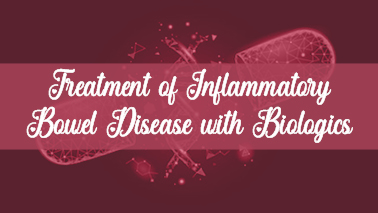
Introduction:
Introduction to inflammatory bowel disease (IBD) and its impact on patients' lives.
The pivotal role of biologics in revolutionizing IBD treatment.
Overview of the scope and structure of the content.
Understanding Inflammatory Bowel Disease:
Definition and classification of IBD (Crohn's disease, ulcerative colitis).
Pathophysiology of IBD: Immune dysregulation and chronic inflammation.
Clinical manifestations and impact on patients' quality of life.
Biologics: Shaping the Therapeutic Landscape:
Mechanisms of action: How biologics target key pathways in IBD pathogenesis.
Types of biologics: Anti-TNF agents, integrin inhibitors, interleukin inhibitors.
Efficacy and safety profiles: Evidence from clinical trials and real-world data.
Clinical Application and Treatment Strategies:
Patient selection criteria: Identifying candidates for biologic therapy.
Treatment algorithms: Stepwise approach to initiating and optimizing biologic therapy.
Monitoring and management of adverse events: Proactive measures to ensure patient safety.
Challenges and Considerations:
Immunogenicity: Understanding the risk of antibody formation and loss of response.
Long-term safety: Surveillance for infections, malignancies, and other adverse effects.
Access and affordability: Addressing barriers to biologic therapy for patients.
Future Directions and Emerging Therapies:
Novel targets and therapeutic approaches on the horizon.
Personalized medicine in IBD: Tailoring treatment based on patient characteristics and biomarkers.
The role of biosimilars in expanding access to biologic therapy.
Patient Perspectives and Shared Decision-Making:
Patient experiences with biologic therapy: Challenges, successes, and lessons learned.
Importance of patient education and involvement in treatment decisions.
The role of healthcare providers in facilitating informed decision-making.
Conclusion:
Recap of the transformative impact of biologics on IBD management.
Call to action for continued research, collaboration, and advocacy to improve outcomes for patients with IBD.
Tags
Biosimilar Conferences
Biologics Conferences 2024 Europe
Pharmacokinetics and Pharmacodynamics of Biologics Conferences
Biosimilars and Biologics Conferences
Biologics Conferences 2024
Biosimilar Conferences 2024 Asia
Biosimilar Conferences 2024
Precision Medicine Conferences
Biosimilar Conferences 2024 USA
Generic Drug Conferences
Medical Devices and Diagnostics Conferences
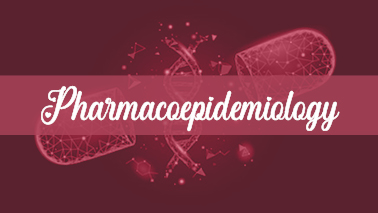
Introduction:
Introduction to pharmacoepidemiology: Its significance in public health and healthcare decision-making.
Overview of the scope and structure of the content.
Understanding Pharmacoepidemiology:
Definition and objectives: Unraveling the intersection of epidemiology and pharmacology.
Key principles: Study designs, data sources, and analytical methods in pharmacoepidemiological research.
Contributions to public health: Informing drug regulation, policy-making, and clinical practice.
Drug Utilization Patterns:
Tracking drug utilization: Assessing prescribing trends, medication adherence, and persistence.
Factors influencing drug utilization: Demographic characteristics, healthcare system factors, and patient preferences.
Implications for healthcare delivery and resource allocation.
Safety Surveillance and Pharmacovigilance:
Detecting adverse drug events: Methods for signal detection and hypothesis testing.
Post-marketing surveillance: Monitoring the safety profile of drugs in real-world settings.
Risk communication and management: Strategies for informing healthcare providers and patients about drug safety concerns.
Assessment of Drug Effectiveness:
Comparative effectiveness research: Evaluating the relative benefits and risks of different treatment options.
Pharmacoepidemiological studies in special populations: Pediatrics, pregnant women, and elderly patients.
Application of real-world evidence in regulatory decision-making.
Challenges and Considerations:
Methodological challenges: Confounding, bias, and sources of error in pharmacoepidemiological studies.
Data quality and availability: Leveraging electronic health records, administrative databases, and other sources.
Ethical considerations: Balancing the need for evidence generation with patient privacy and autonomy.
Future Directions and Innovations:
Advancements in data analytics and technology: Artificial intelligence, machine learning, and natural language processing.
Integration of real-world evidence into regulatory decision-making: Opportunities and challenges.
Addressing emerging issues in drug safety and utilization: Drug shortages, off-label prescribing, and medication errors.
Conclusion:
Recap of the critical role of pharmacoepidemiology in promoting drug safety, optimizing healthcare delivery, and advancing public health.
Tags
Pharmacokinetics and Pharmacodynamics of Biologics Conferences
Intellectual Property Rights Conferences
Generic Drug Conferences
Biosimilar Conferences 2024
Generic Drug Conferences 2024
Rare Disease Conferences
Biologics Conferences 2024 Asia
Biosimilar Conferences 2024 Asia
Precision Medicine Conferences
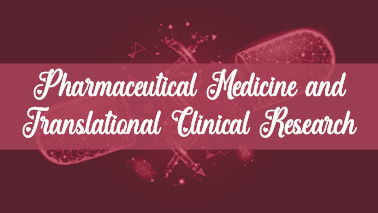
Introduction:
Introducing pharmaceutical medicine: Its pivotal role in translating scientific discoveries into clinical applications.
Overview of translational clinical research: From benchtop experimentation to bedside interventions.
Foundations of Pharmaceutical Medicine:
Evolution of pharmaceutical medicine: Historical milestones and contemporary practices.
Multidisciplinary approach: Collaborations between clinicians, scientists, regulators, and industry stakeholders.
Ethical and regulatory considerations: Ensuring patient safety and data integrity throughout the drug development process.
Translational Research: From Lab to Clinic:
Preclinical studies: Investigating drug mechanisms, efficacy, and safety in laboratory settings.
Phase I trials: Assessing pharmacokinetics, tolerability, and preliminary safety in healthy volunteers.
Phase II and III trials: Evaluating efficacy, safety, and optimal dosing in patient populations.
Precision Medicine and Biomarker Development:
Personalized approaches to treatment: Identifying biomarkers for patient stratification and targeted therapy.
Companion diagnostics: Enabling tailored treatment decisions based on genetic, molecular, or other biomarker profiles.
Challenges and opportunities in biomarker discovery and validation.
Regulatory Landscape and Drug Approval:
Regulatory pathways: Navigating the complex frameworks for drug approval and market access.
Expedited pathways: Accelerating the development and review of innovative therapies for unmet medical needs.
Post-marketing surveillance: Monitoring drug safety and effectiveness in real-world settings.
Global Perspectives and Collaborations:
International harmonization: Aligning regulatory standards and facilitating global drug development.
Collaborative initiatives: Public-private partnerships, consortia, and knowledge-sharing networks.
Addressing disparities in access to innovative therapies: Strategies for equitable distribution and affordability.
Challenges and Future Directions:
Addressing translational gaps: Enhancing communication and collaboration between basic science and clinical research.
Harnessing technology and data analytics: Leveraging big data, artificial intelligence, and digital health for drug development.
Anticipating emerging challenges: Drug resistance, rare diseases, and the evolving landscape of healthcare delivery.
Conclusion:
Reflecting on the transformative impact of pharmaceutical medicine and translational research on patient care and public health.
Emphasizing the need for continued investment in research, education, and collaboration to address unmet medical needs and improve health outcomes.
Tags
Biologics Conferences 2024 Asia
Biosimilar Conferences 2024 Europe
Biosimilar Conferences 2024 Asia
Biologics Conferences 2024 Europe
Biosimilar Conferences 2024
Intellectual Property Rights Conferences
Biologics Conferences 2024
Biosimilar Conferences
Biosimilars and Biologics Conferences
Generic Drug Conferences 2024
Generic Drug Conferences
Biosimilar Medicine Conferences
Rare Disease Conferences
Legislative and Regulatory Pathways for Biosimilars Conferences

Introduction:
The rise of biosimilars: An overview of their emergence as cost-effective alternatives to biologics.
Defining interchangeability: Exploring the criteria and implications for patient care.
Understanding Biosimilars:
Regulatory landscape: Navigating the approval pathways for biosimilars.
Ensuring similarity: Comparative assessment of biosimilars to reference biologics in terms of structure, function, and clinical efficacy.
Real-world evidence: Insights from post-marketing surveillance and pharmacovigilance studies.
Interchangeable Biologics: Bridging the Gap:
Criteria for interchangeability: Regulatory requirements and considerations for designation.
Clinical implications: Ensuring safety and efficacy in switching between biologic products.
Market dynamics: Impact on pricing, competition, and patient access.
Clinical Perspectives and Evidence:
Physician perspectives: Insights on prescribing practices and considerations for interchangeability.
Patient experiences: Understanding preferences, concerns, and experiences with biosimilars and interchangeable biologics.
Comparative effectiveness research: Evaluating outcomes and safety profiles in real-world settings.
Challenges and Considerations:
Immunogenicity and safety concerns: Monitoring for adverse events and antibody development.
Regulatory considerations: Addressing uncertainties and evolving guidelines for interchangeability.
Education and awareness: Providing healthcare providers and patients with accurate information and guidance.
Future Directions and Innovations:
Advances in biosimilar development: Novel targets, formulations, and delivery systems.
Precision medicine approaches: Tailoring treatment based on patient characteristics and therapeutic response.
Regulatory evolution: Anticipating changes in approval pathways and standards for interchangeability.
Conclusion:
Reflecting on the transformative potential of biosimilars and interchangeable biologics in improving patient access and healthcare sustainability.
Advocating for continued research, education, and collaboration to maximize the benefits of these therapies while ensuring patient safety and quality of care.
Tags
Pharmacokinetics and Pharmacodynamics of Biologics Conferences
Biosimilar Medicine Conferences
Biosimilar Conferences 2024 USA
Biosimilars and Biologics Conferences
Rare Disease Conferences
Biologics Conferences 2024
Biologics Conferences 2024 Europe
Biosimilar Conferences
Biosimilar Conferences 2024
Biosimilar Conferences 2024 Europe
Precision Medicine Conferences
Biosimilar Conferences 2024 Asia
Medical Devices and Diagnostics Conferences

Introduction:
Introduction to biopharmaceuticals: Defining their significance in modern medicine.
Overview of the scope and structure of the content.
Understanding Biopharmaceuticals:
Definition and classification: Unraveling the diversity of biologic therapies and their therapeutic applications.
Mechanisms of action: Exploring the intricate pathways through which biopharmaceuticals exert their therapeutic effects.
Production and manufacturing: Delving into the complex processes involved in biologic drug development and production.
Therapeutic Applications:
Targeted therapies: Harnessing biopharmaceuticals to treat a wide range of diseases, including cancer, autoimmune disorders, and infectious diseases.
Personalized medicine: Tailoring treatment approaches based on individual patient characteristics and genetic profiles.
Emerging applications: Investigating novel uses of biopharmaceuticals in regenerative medicine, gene therapy, and beyond.
Regulatory Landscape and Approval Process:
Regulatory framework: Navigating the approval pathways for biopharmaceuticals, including biologics license applications (BLAs) and marketing authorizations.
Safety and efficacy considerations: Ensuring rigorous evaluation of biopharmaceutical products through preclinical and clinical trials.
Post-marketing surveillance: Monitoring drug safety and effectiveness in real-world settings.
Challenges and Considerations:
Immunogenicity and safety concerns: Addressing risks associated with immune responses and adverse events.
Cost and access: Assessing the affordability and accessibility of biopharmaceutical therapies for patients.
Intellectual property and market competition: Balancing innovation with affordability and competition in the biopharmaceutical landscape.
Future Directions and Innovations:
Advances in technology: Leveraging cutting-edge tools and platforms for biopharmaceutical discovery and development.
Next-generation therapies: Exploring the potential of gene editing, RNA-based therapeutics, and cell-based therapies.
Regulatory evolution: Anticipating changes in regulatory frameworks and approval processes to accommodate the evolving landscape of biopharmaceutical innovation.
Conclusion:
Reflecting on the transformative impact of biopharmaceuticals on patient care and public health.
Emphasizing the need for continued investment in research, education, and collaboration to unlock the full potential of biopharmaceutical therapies.
Tags
Biologics Conferences 2024
Biosimilar Conferences
Biosimilar Medicine Conferences
Legislative and Regulatory Pathways for Biosimilars Conferences
Intellectual Property Rights Conferences
Generic Drug Conferences 2024
Pharmacokinetics and Pharmacodynamics of Biologics Conferences
Medical Devices and Diagnostics Conferences
Biosimilar Conferences 2024 Asia
Biosimilar Conferences 2024 USA
Biosimilar Conferences 2024
Biosimilar Conferences 2024 Europe
Market Value of Biosimilars in USA:
Biosimilars are biological products that are highly similar to and have no clinically meaningful differences from an FDA-approved reference product. These products are becoming increasingly important in the healthcare industry as they provide an alternative to expensive brand-name biologic drugs. The market for biosimilars in the United States is expected to grow significantly in the coming years.
According to a report by Grand View Research, the biosimilars market in the United States was valued at $5.3 billion in 2020 and is expected to grow at a compound annual growth rate (CAGR) of 31.4% from 2021 to 2028. The increasing prevalence of chronic diseases, such as cancer, autoimmune diseases, and diabetes, is driving the demand for biosimilars in the United States.
The report also indicates that the introduction of biosimilars has led to cost savings for patients and the healthcare system. Biosimilars typically cost 20% to 30% less than their brand-name counterparts, making them more affordable for patients and reducing healthcare costs.
Several biosimilar drugs have been approved by the FDA in recent years, including biosimilars for drugs like Humira, Enbrel, and Remicade. These drugs have already started to gain traction in the market, and their use is expected to continue to grow.
However, there are still some challenges facing the biosimilar market in the United States. For example, there is still some reluctance among physicians to prescribe biosimilars, and there is also a lack of education and awareness among patients about these products. Additionally, the patent protection for some biologic drugs limits the entry of biosimilars into the market.
Overall, the biosimilar market in the United States is expected to continue to grow, driven by increasing demand for cost-effective treatments for chronic diseases.
Market Value of Biologics in USA:
Biologics are complex medicines made from living cells or organisms that are used to treat a wide range of diseases, including cancer, autoimmune disorders, and rare genetic conditions. The market value of biologics in the United States has been steadily increasing over the past few years.
According to a report by EvaluatePharma, the market for biologics in the United States was valued at $325 billion in 2020, accounting for more than 40% of the global biologics market. The report also predicts that the market for biologics in the United States will continue to grow at a compound annual growth rate (CAGR) of 7.4% through 2026, reaching a total value of $489 billion.
The growth of the biologics market is being driven by several factors, including the increasing prevalence of chronic diseases, the development of new and innovative biologic drugs, and the expansion of biosimilar drugs.
In recent years, there has been a significant increase in the number of FDA approvals for biologic drugs, particularly in the areas of oncology and immunology. These drugs are often very expensive, with some costing hundreds of thousands of dollars per patient per year. However, they also offer significant benefits for patients, such as improved survival rates and better quality of life.
The biologics market in the United States is highly competitive, with many companies vying for market share. Some of the top players in the market include Roche, Johnson & Johnson, Amgen, and AbbVie.
Overall, the market value of biologics in the United States is expected to continue to grow in the coming years, driven by the increasing demand for innovative treatments for chronic diseases and the development of new biologic drugs.
Market Value of Biosimilars in Europe:
The market value of biosimilars in Europe has been growing steadily in recent years, driven by the increasing demand for more cost-effective treatments for chronic diseases such as cancer, autoimmune disorders, and diabetes.
According to a report by IQVIA, the biosimilars market in Europe was valued at €2.7 billion in 2020, representing a 27% increase from the previous year. The report also predicts that the market for biosimilars in Europe will continue to grow at a compound annual growth rate (CAGR) of 25% through 2025, reaching a total value of €7.5 billion.
The growth of the biosimilars market in Europe has been facilitated by supportive policies and regulatory frameworks. The European Medicines Agency (EMA) has been at the forefront of promoting the development and approval of biosimilars, with a well-established regulatory pathway for the approval of these products. This has led to an increasing number of biosimilar approvals in recent years, with biosimilars now available for a range of reference products such as Humira, Remicade, and Herceptin.
The introduction of biosimilars has also led to cost savings for patients and healthcare systems. Biosimilars typically cost 20% to 30% less than their brand-name counterparts, making them more affordable for patients and reducing healthcare costs.
The biosimilars market in Europe is highly competitive, with many companies vying for market share. Some of the top players in the market include Pfizer, Novartis, Samsung Bioepis, and Sandoz.
Overall, the biosimilars market in Europe is expected to continue to grow in the coming years, driven by the increasing demand for cost-effective treatments and the expansion of biosimilar drugs into new therapeutic areas.
Market Value of Biologics in Europe
The market value of biologics in Europe has been steadily increasing over the past few years, driven by the growing prevalence of chronic diseases and the development of innovative biologic drugs to treat them.
According to a report by IQVIA, the biologics market in Europe was valued at €54 billion in 2020, representing a 5% increase from the previous year. The report also predicts that the market for biologics in Europe will continue to grow at a compound annual growth rate (CAGR) of 4% through 2025, reaching a total value of €65 billion.
The biologics market in Europe is highly competitive, with many companies vying for market share. Some of the top players in the market include Roche, AbbVie, Johnson & Johnson, and Novartis.
The growth of the biologics market in Europe is being driven by several factors, including the increasing prevalence of chronic diseases such as cancer and autoimmune disorders, the development of new and innovative biologic drugs, and the expansion of biosimilar drugs.
Biosimilar drugs are becoming increasingly important in the European biologics market as they offer a more cost-effective alternative to expensive brand-name biologic drugs. The introduction of biosimilars has led to cost savings for patients and healthcare systems, as they typically cost 20% to 30% less than their brand-name counterparts.
Overall, the market value of biologics in Europe is expected to continue to grow in the coming years, driven by the increasing demand for innovative treatments for chronic diseases and the expansion of biosimilar drugs. However, the market may face some challenges such as the increasing pressure from regulatory authorities to reduce drug prices and the potential for competition from emerging markets.
Market Value of Biosimilars in Asia
The market value of biosimilars in Asia is also growing rapidly. According to a report by Allied Market Research, the Asia-Pacific biosimilars market size was valued at USD 2.2 billion in 2020 and is expected to reach USD 13.2 billion by 2028, growing at a CAGR of 25.6% from 2021 to 2028.
The key drivers of the biosimilars market in Asia include the increasing prevalence of chronic diseases, rising demand for cost-effective treatment options, and the need to address the growing burden of healthcare costs. In addition, favorable government regulations and policies, such as the establishment of regulatory pathways for biosimilars, are also contributing to market growth.
Japan, South Korea, and India are the largest markets for biosimilars in the region, with significant investments being made by companies such as Samsung Bioepis, Celltrion, and Biocon in these markets. In addition, the emergence of new players, such as Chinese biotech firms, is expected to further boost the growth of the biosimilars market in Asia.
Overall, the biosimilars market in Asia is expected to continue its growth trajectory, driven by factors such as increasing healthcare expenditure, growing demand for affordable and effective biologics, and the need to address the unmet medical needs of patients.
Market Value of Biologics in Asia
The market value of biologics in Asia has been growing rapidly in recent years. According to a report by Grand View Research, the Asia Pacific biologics market size was valued at USD 55.6 billion in 2020 and is expected to grow at a compound annual growth rate (CAGR) of 7.6% from 2021 to 2028.
Factors contributing to this growth include increasing investment in research and development of biologics, a large patient population with chronic diseases, increasing adoption of biologics as a preferred treatment option, and favorable government initiatives to support the biopharmaceutical industry.
Some of the major players operating in the biologics market in Asia include Amgen Inc., Roche Holding AG, AbbVie Inc., Sanofi, and Novo Nordisk A/S. Japan, China, and South Korea are the largest markets for biologics in the region, while India and Southeast Asian countries are expected to witness significant growth in the coming years.
Overall, the Asia Pacific biologics market is expected to continue its growth trajectory due to factors such as increasing healthcare expenditure, growing awareness about the benefits of biologics, and rising demand for personalized medicine.
Market Value of Biosimilars in Japan
The market value of biosimilars in Japan is one of the largest in the world. According to a report by Frost & Sullivan, the Japanese biosimilars market size was valued at USD 2.8 billion in 2020 and is expected to grow at a CAGR of 6.9% from 2021 to 2025.
Japan is one of the largest markets for biosimilars in the world due to its well-established regulatory framework for biosimilars, which has allowed for the timely launch of biosimilars and increased competition in the market. In addition, the Japanese government has implemented policies to promote the use of biosimilars as a cost-effective treatment option, which has further boosted market growth.
Some of the major players operating in the Japanese biosimilars market include Samsung Bioepis, Pfizer, Mylan, and Daiichi Sankyo. The market is dominated by biosimilars for oncology and autoimmune diseases, such as Herceptin, Remicade, and Enbrel.
Overall, the biosimilars market in Japan is expected to continue its growth trajectory, driven by factors such as an aging population, increasing prevalence of chronic diseases, and the need to reduce healthcare costs. The introduction of new biosimilars, along with the increasing adoption of biosimilars by healthcare providers, is expected to further boost market growth in the coming years.
Market Value of Biosimilars in China
As of my knowledge cutoff date of September 2021, the market value of biosimilars in China was rapidly growing and expected to continue to do so in the coming years. According to a report by ResearchAndMarkets, the biosimilars market in China was valued at approximately US$1.56 billion in 2020 and was projected to reach US$7.84 billion by 2026, with a compound annual growth rate (CAGR) of 29.3% during the forecast period (2021-2026).
The growth of the biosimilars market in China is driven by various factors such as the increasing prevalence of chronic diseases, the need for cost-effective treatments, and the government's initiatives to promote the use of biosimilars. In addition, the patent expirations of several blockbuster biologic drugs are also creating opportunities for biosimilar manufacturers in China.
It is important to note that the market value of biosimilars in China may have changed since my knowledge cutoff date, and the growth projections may have been impacted by various factors such as the ongoing COVID-19 pandemic and changes in government policies.
Market Value of Biosimilars in Canada
According to a report by Grand View Research, the biosimilars market in Canada was valued at approximately CAD 437.9 million in 2020 and was projected to reach CAD 3.3 billion by 2028, with a CAGR of 28.9% during the forecast period (2021-2028).
The growth of the biosimilars market in Canada is driven by factors such as the increasing prevalence of chronic diseases, the need for cost-effective treatments, and the government's efforts to encourage the use of biosimilars. The Canadian government has implemented various policies and initiatives to promote the use of biosimilars, including a biosimilar switching program, which aims to increase the uptake of biosimilars and reduce healthcare costs.
It is important to note that the market value of biosimilars in Canada may have changed since my knowledge cutoff date, and the growth projections may have been impacted by various factors such as the ongoing COVID-19 pandemic and changes in government policies.
Market Value of Biosimilars in Australia
According to a report by IQVIA, the biosimilars market in Australia was valued at AUD 364 million in 2020 and was projected to reach AUD 2.2 billion by 2025, with a CAGR of 43.4% during the forecast period (2020-2025).
The growth of the biosimilars market in Australia is driven by factors such as the increasing prevalence of chronic diseases, the need for cost-effective treatments, and the government's efforts to encourage the use of biosimilars. The Australian government has implemented various policies and initiatives to promote the use of biosimilars, including the Biosimilar Education Grant program, which provides funding to support education and training for healthcare professionals on biosimilars.
It is important to note that the market value of biosimilars in Australia may have changed since my knowledge cutoff date, and the growth projections may have been impacted by various factors such as the ongoing COVID-19 pandemic and changes in government policies.
Biosimilars, Biologics and Generic Drugs Societies in USA
Biosimilars Forum | Generic Pharmaceutical Association,GPhA | Biotechnology Innovation Organization (BIO) | American Society of Clinical Oncology (ASCO) | American College of Rheumatology (ACR) | Academy of Managed Care Pharmacy (AMCP) | National Comprehensive Cancer Network (NCCN) | American Association of Clinical Endocrinologists (AACE) | National Psoriasis Foundation (NPF) | The Society for Immunotherapy of Cancer (SITC) | Generic Pharmaceutical Association (GPhA) | Association for Accessible Medicines (AAM) | American Association of Pharmaceutical Scientists (AAPS) | Pharmaceutical Research and Manufacturers of America (PhRMA) | National Community Pharmacists Association (NCPA) | Academy of Managed Care Pharmacy (AMCP) | American Pharmacists Association (APhA) | National Association of Chain Drug Stores (NACDS) | Healthcare Distribution Alliance (HDA) | United States Pharmacopeia (USP) | Biotechnology Innovation Organization (BIO) | International Society for Biological and Environmental Repositories (ISBER) | American Association of Pharmaceutical Scientists (AAPS) | American Society of Gene and Cell Therapy (ASGCT) | American Society for Biochemistry and Molecular Biology (ASBMB) | American Society of Hematology (ASH) | American Society of Clinical Oncology (ASCO) | Society for Immunotherapy of Cancer (SITC) | International Society for Stem Cell Research (ISSCR) | Federation of American Societies for Experimental Biology (FASEB) | American Association of Pharmaceutical Scientists (AAPS) | American Association of Immunologists (AAI) | American Association for Cancer Research (AACR) | American Society for Biochemistry and Molecular Biology (ASBMB) | American Society for Cell Biology (ASCB) | American Society for Clinical Pharmacology and Therapeutics (ASCPT) | American Society for Microbiology (ASM) | American Society of Gene & Cell Therapy (ASGCT) | American Society of Hematology (ASH) | Association of Biomolecular Resource Facilities (ABRF) | Association of Medical Diagnostics Manufacturers (AMDM) | Biomedical Engineering Society (BMES) | Biotechnology Innovation Organization (BIO) | Clinical Immunology Society (CIS) | Coalition of State Bioscience Institutes (CSBI) | International Society for Biological and Environmental Repositories (ISBER) | International Society for Biological Therapy of Cancer (iSBTc) | International Society for Extracellular Vesicles (ISEV) | International Society for Magnetic Resonance in Medicine (ISMRM) | International Society for Pharmacoepidemiology (ISPE) | International Society for Stem Cell Research (ISSCR) | International Society of Regulatory Toxicology and Pharmacology (ISRTP) | International Society of Biomechanics (ISB) | Massachusetts Biotechnology Council (MassBio) | National Institute of Biomedical Imaging and Bioengineering (NIBIB) | National Institute of General Medical Sciences (NIGMS) | North American Vascular Biology Organization (NAVBO) | Parenteral Drug Association (PDA) | Society for Biological Engineering (SBE) | Society for Biomaterials (SFB) | Society for Immunotherapy of Cancer (SITC) | Society for Industrial Microbiology and Biotechnology (SIMB) | Society for In Vitro Biology (SIVB) | Society for Laboratory Automation and Screening (SLAS) | Society for Neuroscience (SFN) | Society for the Advancement of Blood Management (SABM) | Society for the Study of Reproduction (SSR) | Society of Biological Psychiatry (SOBP) | Society of Toxicology (SOT) | The American Society of Pharmacognosy (ASP) | The Association of Medical Illustrators (AMI) | The Endocrine Society (ENDO) | The Federation of American Societies for Experimental Biology (FASEB) | The Protein Society | The RNA Society | The Society for Experimental Biology and Medicine (SEBM) | The Society for Investigative Dermatology (SID) | The Society for Pediatric Research (SPR) | The Transplantation Society (TTS) | The American Society of Clinical Oncology (ASCO)
Biosimilars, Biologics and Generic Drugs Societies in Europe
European Society for Medical Oncology (ESMO) | European Society of Gene and Cell Therapy (ESGCT) | European Federation of Biotechnology (EFB) | European Association for Bioindustries (EuropaBio) | European Society for Immunodeficiencies (ESID) | European Society of Clinical Microbiology and Infectious Diseases (ESCMID) | European Society for Animal Cell Technology (ESACT) | European Society for Translational Medicine (EUSTM) | European Molecular Biology Organization (EMBO) | European Society of Cardiology (ESC) |
| European Medicines Agency (EMA) | European Biopharmaceutical Enterprises (EBE) | European Association for Bioindustries (EuropaBio) | European Society for Medical Oncology (ESMO) | European Society of Clinical Microbiology and Infectious Diseases (ESCMID) | International Generic and Biosimilar Medicines Association (IGBA) | European Society for Medical Oncology (ESMO) | European Society for Medical Oncology Magnitude of Clinical Benefit Scale (ESMO-MCBS) | European Society of Oncology Pharmacy (ESOP) | European Society of Pharmacovigilance (ESoP) | European Generic Medicines Association (EGA) | European Association for Bioindustries (EuropaBio) | European Confederation of Pharmaceutical Entrepreneurs (EUCOPE) | Medicines for Europe | European Federation of Pharmaceutical Industries and Associations (EFPIA) | European Medicines Agency (EMA) | European Society for Clinical Pharmacy (ESCP) | European Society of Pharmacovigilance (ESoP) | European Association of Hospital Pharmacists (EAHP) | European Society of Cardiology (ESC) | European Medicines Agency (EMA) | European Biopharmaceutical Enterprises (EBE) | European Federation of Pharmaceutical Industries and Associations (EFPIA) | European Generic medicines Association (EGA) | European Society for Medical Oncology (ESMO) | European Association for Bioindustries (EuropaBio) | European Society of Oncology Pharmacy (ESOP) | European Society for Medical Oncology Magnitude of Clinical Benefit Scale (ESMO-MCBS) | International Society for Biological and Environmental Repositories (ISBER) | International Society for Pharmacoepidemiology (ISPE) | International Society for Cellular Therapy (ISCT) | International Association for Pharmaceutical Technology (APV) | International Association of Therapeutic Drug Monitoring and Clinical Toxicology (IATDMCT) | International Federation of Pharmaceutical Manufacturers & Associations (IFPMA) | International Society for Biological Therapy of Cancer (iSBTc) | International Society for Pharmacoeconomics and Outcomes Research (ISPOR) | Biopharmaceutical Section of the Pharmaceutical Society of Ireland (PSI) | Biosimilars Working Party of the Pharmaceutical Group of the European Union (PGEU) | Austrian Biosimilar Association (ABDA) | Association of the British Pharmaceutical Industry (ABPI) | Bio-Industry Association (BIA) | BundesverbandBiosimilars (Biosimilars Germany) | Croatian Biosimilar Society (CBS) | Danish Association of Pharmaconomists (APOTEKERFORENINGEN) | Dutch Society of Hospital Pharmacists (NVZA) | European Association of Hospital Pharmacists (EAHP) | Finnish Generic Pharmaceutical Association (FINGEN) | Generics and Biosimilars Initiative (GaBI) | German Biosimilars Association (GBA) | German Pharmaceutical Industry Association (BPI) | Hungarian Society for Clinical Pharmacy and Pharmacotherapy | Icelandic Pharmaceutical Society (LIF) | Italian Association of Pharmaceutical Medicine (AIM) | Italian Society of Hospital Pharmacy (SIFO) | Lithuanian Association of Pharmaceutical Manufacturers (LAVV) | Nordic Biosimilar Association (NBA) | Norwegian Pharmaceutical Society (NFS) | Pharmaceutical Industry Association of Turkey (IEIS) | Polish Society of Hospital Pharmacists (PTF) | Romanian Society of Pharmaceutical Medicine (SMFR) | Russian Society of Specialists in Clinical Pharmacology and Therapy (RSCPT) | Serbian Association for Clinical Pharmacology and Therapeutics (SACPT) | Swiss Society of Pharmaceutical Sciences (SSPhS) | Slovenian Pharmaceutical Society (SFD) | Spanish Agency for Medicines and Medical Devices (AEMPS) | Spanish Association of Biosimilar Medicines (Biosim) | Swedish Generic Medicines Association (LIF)
Biosimilars, Biologics and Generic Drugs Societies in Asia
Asian Association of Pharmacy Schools (AAPS) | Indian Drug Manufacturers' Association (IDMA) | Pharmaceutical Association of Thailand (PAT) | China Pharmaceutical Association (CPA) | Japanese Generic Medicines Association (JGA) | Korea Pharmaceutical Manufacturers Association (KPMA) | Taiwan Generic Pharmaceutical Association (TGPA) | Pharmaceutical Society of Korea (PSK) | Indonesian Pharmacists Association (IAI) | Philippine Pharmacists Association (PPA) | Pharmaceutical Society of Singapore (PSS) | Malaysia Pharmaceutical Society (MPS) | Hong Kong Association of the Pharmaceutical Industry (HKAPI) | Bangladesh Association of Pharmaceutical Industries (BAPI) | Vietnam Pharmaceutical Companies Association (VNPCA) | Pakistan Pharmaceutical Manufacturers Association (PPMA) | Sri Lanka Chamber of Pharmaceutical Industry (SLCPI) | Association of Pharmaceutical Producers of Nepal (APPON) | Mongolian Pharmaceutical Association (MPA) | Myanmar Pharmaceutical and Medical Equipment Entrepreneurs' Association (MPMEEA) | Cambodian Association of Pharmaceutical Manufacturers (CAPM) | Brunei Pharmaceutical Society (BPS) | Laotian Association of Pharmaceutical Producers (LAPP) | Macau Pharmaceutical Association (MPA) | Taiwan Pharmacists Association (TPA) | Iran Pharmaceutical Association (IPA) | Jordanian Association of Pharmaceutical Manufacturers (JAPM) | Kuwait Pharmaceutical Association (KPA) | Oman Pharmaceutical Society (OPS) | Qatar Pharmaceutical Association (QPA) | Saudi Pharmaceutical Society (SPS) | Syrian Pharmaceutical Association (SPA) | Pharmaceutical Society of Uzbekistan (PSU) | Armenian Association of Pharmaceutical Manufacturers (AAPM) | Azerbaijan Pharmaceutical Manufacturers Association (APMA) | Georgian Pharmaceutical Association (GPhA) | Kazakh Pharmaceutical Association (KPA) | Kyrgyz Pharmaceutical Association (KPA) | Lebanese Order of Pharmacists (LOP) | Palestinian Pharmaceutical Association (PPA) | Yemen Pharmaceutical Association (YPA) | Pharmaceutical Association of Fiji (PAF) | Association of Pharmaceutical Producers of Kazakhstan (APPK) | Association of Pharmaceutical Producers of Tajikistan (APPT) | Association of Pharmaceutical Producers of Turkmenistan (APPTM) | Association of Pharmaceutical Producers of Kyrgyzstan (APPKR) | Association of Pharmaceutical Producers of Uzbekistan (APPKU) | Pharmaceutical Association of Malaysia (PhAMA) | Pharmaceutical Society of Hong Kong (PSHK) | Asian Biosimilars Forum | Asia Pacific Association for Medical Toxicology (APAMT) | Asia Pacific Economic Cooperation (APEC) | Asia Pacific Federation of Clinical Biochemistry and Laboratory Medicine (APFCB) | Asia Pacific Society of Infection Control (APSIC) | Asia Pacific Society of Medical Virology (APSMV) | Asia Pacific Society for Medical and Biological Engineering (APMBME) | Association of Biotechnology Led Enterprises (ABLE) | Association of Korean Medicine (AKOM) | Bio-Industry Association of Taiwan (BIAT) | Biosimilars Malaysia | Biosimilar Medicines Association of South Korea (Biosimilars Korea) | Biosimilars Australia | Chinese Pharmaceutical Association (CPA) | Indian Society of Toxicology (IST) | Indian Society of Pharmacognosy (ISP) | Indonesian Society of Clinical Pathology and Laboratory Medicine (ISLH) | International Society of Biopharmaceutical Statistics (ISBS) | International Society of Oncology Pharmacy Practitioners (ISOPP) | Iranian Society of Clinical Pharmacy (IRSCP) | Japan Biosimilars Association | Korean Society for Pharmaceutical Sciences and Technology (KSPST) | Malaysian Pharmaceutical Society (MPS)
Pakistan Pharmacists Society (PPS) | Pharmaceutical Association of Thailand (PAT) | Pharmaceutical Society of Japan (PSJ) | Philippines Society of Cosmetic Science (PSCS) | Society for In Vitro Biology (SIVB) | Society of Pharmaceutical Education and Research (SPER) | Society of Toxicology (SOT) | South Asian Association of Regional Cooperation (SAARC) | Taiwan Pharmaceutical Alliance (TPA) | Thai Society for Biotechnology (TSB) | The Chinese Society of Toxicology (CST) | The Hong Kong Society of Clinical Chemistry (HKSCC) | The Indian Society of Pharmacology and Therapeutics (ISPT) | The Korean Society of Pharmaceutical Medicine (KSPM) | The Korean Society of Pharmacology (KSP) | The Pharmaceutical Society of Taiwan (PST) | Turkish Society of Pharmacology (TSP) | Vietnamese Society of Pharmacology (VSP) | Biosimilars India | Bangladesh Society of Pharmaceutical Professionals (BSPP) | Chinese Society of Clinical Pharmacy (CSCP) | Indian Pharmaceutical Association (IPA) | Indonesian Pharmacists Association (IAI) | Iran Pharmaceutical Association (IPA) | Malaysian Association of Pharmaceutical Suppliers (MAPS) | Pharmaceutical Research and Manufacturers Association of India (PRMAI) | Pharmaceutical Society of Singapore (PSS) | Asian Federation of Biotechnology (AFOB) | Asia Pacific Association of Allergy, Asthma and Clinical Immunology (APAAACI) | Asia Pacific Biotech News (APBN) | Asia Pacific Biotech News (APBN) Malaysia | Asia Pacific Biotech News (APBN) Thailand | Asia Pacific Society for Immunodeficiencies (APSID) | Asia Pacific Society for Medical Genetics (APSMG) | Asia-Pacific Association for Gynecologic Endoscopy and Minimally Invasive Therapy (APAGE) | Asia-Pacific Federation of Clinical Chemistry and Laboratory Medicine (APFCB) | Asia-Pacific Federation of Pharmacologists (APFP) | Asia-Pacific Society for Sexual Medicine (APSSM) | Asian Association of Schools of Pharmacy (AASP) | Asian College of Clinical Pharmacy (ACCP) | Asian Society for Neuro-Oncology (ASNO) | Asian Society for Pediatric Research (ASPR) | Association of Biotechnology Led Enterprises (ABLE)
Association of Korean Medicine (AKOM) | Australian and New Zealand Society for Cell and Developmental Biology (ANZSCDB) | Bio-Industry Association of Taiwan (BIAT) | BioSingapore | Chinese Pharmaceutical Association (CPA) | Indian Society of Toxicology (IST) | Indonesian Society of Clinical Pathology and Laboratory Medicine (ISLH) | International Society for Pharmacoepidemiology (ISPE) | International Society for Stem Cell Research (ISSCR) | Iranian Society of Clinical Pharmacy (IRSCP) | Japan Bioscience Database Center (JBDC)
Japan Society of Clinical Pharmacology and Therapeutics (JSCPT) | Korean Society for Biochemistry and Molecular Biology (KSBMB) | Korean Society for Molecular and Cellular Biology (KSMCB) | Malaysian Pharmaceutical Society (MPS) | Pakistan Pharmacists Society (PPS) | Pharmaceutical Association of Thailand (PAT) | Pharmaceutical Society of Japan (PSJ) | Philippines Society of Cosmetic Science (PSCS) | Society for In Vitro Biology (SIVB) | Society of Pharmaceutical Education and Research (SPER) | Society of Toxicology (SOT) | South Asian Association of Regional Cooperation (SAARC) | Taiwan Society of Health-System Pharmacists (TSHP) | Taiwan Pharmaceutical Alliance (TPA) | The Chinese Society of Toxicology (CST) | The Indian Society of Pharmacology and Therapeutics (ISPT) | The Korean Society of Pharmaceutical Medicine (KSPM) | The Korean Society of Pharmacology (KSP) | The Pharmaceutical Society of Taiwan (PST) | Turkish Society of Pharmacology (TSP) | Vietnamese Society of Pharmacology (VSP) | Biotechnology Society of Nepal (BSN) | Biosimilars India
100 Major Biosimilars and Biologics Journals:
European Journal of Pharmacology | International Journal of Biological Sciences | Frontiers in Pharmacology | Pharmaceuticals | Pharmaceuticals Policy and Law | Journal of Pharmacy Practice and Research |Clinical Pharmacokinetics | Biochemistry and Cell Biology |Bioorganic & Medicinal Chemistry | Biomedicine & Pharmacotherapy | Biomaterials | Molecular Biology Reports | Pharmacological Research | Pharmacogenomics | Journal of Pharmacy and Pharmacology Research | Advanced Drug Delivery Reviews | Journal of Immunological Methods | Journal of Chromatography B | Current Drug Metabolism | Journal of Drug Delivery Science and Technology | Drug Development Research | Regulatory Toxicology and Pharmacology | Frontiers in Pharmacology | International Immunopharmacology | Pharmacogenetics and Genomics | Drug Testing and Analysis | Journal of Molecular Liquids | Computational and Structural Biotechnology | Journal of Pharmaceutical Sciences & Emerging Drugs | Journal of Biomedical Nanotechnology | Nanomedicine: Nanotechnology, Biology, and Medicine | Journal of Pharmaceutical Biochemistry | Anti-Cancer Agents in Medicinal Chemistry | Current Cancer Drug Targets / Journal of Bioequivalence & Bioavailability | Journal of Clinical Pharmacology | Biotechnology Reports | Journal of Pharmacy and Bioallied Sciences | International Journal of Pharmaceutics and Drug Delivery Research | Journal of Drug Delivery and Therapeutics | Journal of Pharmacy and Pharmaceutical Sciences |Journal of Pharmaceutical Sciences and Research | Journal of Biosciences and Medicines | International Journal of Biological and Pharmaceutical Research | The AAPS Journal | Journal of Translational Medicine | Pharmacology & Therapeutics | Molecular Cancer Therapeutics
50 Major Biologics Companies in the USA
Amgen | Biogen | Bristol Myers Squibb | Celgene (a subsidiary of Bristol Myers Squibb) | Eli Lilly and Company | Genentech (a subsidiary of Roche) | Gilead Sciences | GlaxoSmithKline | Johnson & Johnson | Merck & Co. | Moderna | Novartis | Pfizer | Regeneron Pharmaceuticals | Sanofi | AbbVie | Alexion Pharmaceuticals | Alnylam Pharmaceuticals | Apellis Pharmaceuticals | AstraZeneca | BioMarin Pharmaceutical | bluebird bio | Cytokinetics | Editas Medicine | Emergent BioSolutions | Genzyme (a subsidiary of Sanofi) | Grifols | ImmunoGen | Intercept Pharmaceuticals | Ionis Pharmaceuticals | Jazz Pharmaceuticals | Kite Pharma (a subsidiary of Gilead Sciences) | Karyopharm Therapeutics | Ligand Pharmaceuticals | MacroGenics | MedImmune (a subsidiary of AstraZeneca) | Momenta Pharmaceuticals | MorphoSys | Neurocrine Biosciences | OncoMed Pharmaceuticals | Prothena Corporation | Sangamo Therapeutics | Seattle Genetics | Shire (a subsidiary of Takeda Pharmaceutical Company) | Spark Therapeutics (a subsidiary of Roche) | Synthorx (a subsidiary of Sanofi) | Takeda Pharmaceutical Company | uniQure | Vertex Pharmaceuticals | Xencor
50 Major Biologics Companies in Europe:
Roche | Novo Nordisk | Novartis | AstraZeneca | Sanofi | UCB | Genmab | Galapagos | Merck KGaA | GlaxoSmithKline | Takeda Pharmaceutical Company | Lonza Group | BoehringerIngelheim | Ferring Pharmaceuticals | Bayer | Shire (a subsidiary of Takeda Pharmaceutical Company) | AbbVie | Grifols | Swedish Orphan Biovitrum (Sobi) | BioNTech | Amgen | Biogen | Bristol Myers Squibb | Eli Lilly and Company | Pfizer | Janssen Pharmaceutical Companies of Johnson & Johnson | MSD | CSL Behring | Alexion Pharmaceuticals | MedImmune (a subsidiary of AstraZeneca) | BoehringerIngelheimBioXcellence | Apotex | Menarini Biotech | ChiesiFarmaceutici | Grünenthal | BioMarin Pharmaceutical | Synthon | Gedeon Richter | Fresenius Kabi | Sandoz International | Mundipharma | Fresenius Kabi | Recordati | Ipsen | Oryzon Genomics | Zentiva | Biofrontera | Eurofins Scientific | ViforPharma | MorphoSys
50 Major Biologics Companies in Asia:
Shanghai Fosun Pharmaceutical, China | Wuxi Biologics, China | Sinovac Biotech, China | Biocon, India | Dr. Reddy's Laboratories, India | Serum Institute of India, India | Bharat Biotech, India | Reliance Life Sciences, India | Shanghai Junshi Biosciences, China | Chugai Pharmaceutical, Japan | Eisai, Japan | Mitsubishi Tanabe Pharma, Japan | Takeda Pharmaceutical Company, Japan | Fujifilm Kyowa Kirin Biologics, Japan | TaiGen Biotechnology, Taiwan | Celltrion Healthcare, South Korea | Samsung Bioepis,South Korea | Green Cross, South Korea | GC Pharma, South Korea | Hanmi Pharmaceutical, South Korea | LG Chem Life Sciences, South Korea | Bioleaders, South Korea | Shanghai Henlius Biotech, China | Beijing Biocytogen, China | Qilu Pharmaceutical, China | Shanghai Sunway Biotech, China | Tasly Biopharmaceuticals, China | Hualan Biological Engineering, China | Zhejiang Medicine, China | Innovent Biologics, China | Shenzhen Mellow Hope Pharm Industrial, China | China National Biotec Group, China | Shanghai CP Guojian Pharmaceutical, China |
Beijing ShenogenPharma Group, China | CStone Pharmaceuticals, China | Biotheus, China | Sinocelltech, China | Genexine, South Korea | Vingroup, Vietnam | Gennova Biopharmaceuticals, India | StelisBiopharma, India | ZydusCadila, India | Glenmark Pharmaceuticals, India | BiotecPharmacon, Norway | Celltrion, South Korea | Daewoong Pharmaceutical, South Korea | LivzonMabpharm, China | Taiwan Liposome Company, Taiwan | TTY Biopharm, Taiwan | Vaccitech, China
50 Major Biosimilars Companies in the USA:
Amgen | Pfizer | Merck & Co | Biogen | Novartis | Eli Lilly and Company | Mylan | Teva Pharmaceutical Industries | AbbVie | Sandoz (Novartis subsidiary) | CoherusBioSciences | Samsung Bioepis | BoehringerIngelheim | Momenta Pharmaceuticals | Fresenius Kabi | Biocon Biologics | Apotex | Viatris | Therapeutic Proteins International | Hospira (Pfizer subsidiary) | Accord Healthcare | Genentech (Roche subsidiary) | Fujifilm Diosynth Biotechnologies | Intas Pharmaceuticals | Pfenex | Cipla | ZydusCadila | Lupin Pharmaceuticals | Wockhardt | Hetero Drugs | Alembic Pharmaceuticals | StadaArzneimittel | Gedeon Richter | Aurobindo Pharma | Torrent Pharmaceuticals | Glenmark Pharmaceuticals | DRL Ltd | Apobiologix | Prolong Pharmaceuticals | Gene Techno Science | Cinfa Biotech | USV Private Limited | Alvotech | Therapeutics MD | Neos Bioscience | PTC Therapeutics | I-MabBiopharma | Vaxxinity | Regeneron Pharmaceuticals | Evox Therapeutics
50 Major Biosimilars Companies in Europe:
Sandoz (Novartis subsidiary) | Teva Pharmaceutical Industries | Merck & Co | Amgen | Pfizer | BoehringerIngelheim | Biogen | Celltrion | Mylan | Fresenius Kabi | Accord Healthcare | Samsung Bioepis | Stada Arzneimittel | Pfenex | Mundipharma International | Cinfa Biotech | Zentiva Group | Intas Pharmaceuticals | Biocon Biologics |
Mabion SA | Hetero Drugs | Gedeon Richter | Synthon | Polpharma Biologics | Kern Pharma | Generium Pharmaceuticals | XbraneBiopharma AB | FarmacéuticaParaguaya S.A | Janssen Pharmaceutica (Johnson & Johnson subsidiary) | Sobi (Swedish Orphan Biovitrum AB) | Alvotech | Napp Pharmaceuticals | LFB Biotechnologies | BioXpress Therapeutics | Bioeq GmbH | Hikma Pharmaceuticals | Xellia Pharmaceuticals | Sanofi | Orion Corporation | 3SBio Inc | R-Pharm Germany GmbH | Polpharma Group | Grifols | Richter-Helm BioLogics GmbH & Co. KG | Pharmathen | Theramex | Glycotope GmbH | HanallBiopharma Co. Ltd | RentschlerBiopharma SE | Qilu Pharmaceutical
50 Major Biosimilars Companies in Asia:
Biocon Biologics, India | Dr. Reddy's Laboratories, India | Lupin Limited, India | ZydusCadila, India | Reliance Life Sciences, India | Intas Pharmaceuticals, India | Hetero Drugs, India | Celltrion Healthcare, South Korea | Samsung Bioepis, South Korea | GC Pharma, South Korea | Chong Kun Dang Bio, South Korea | Dong-A ST Co., Ltd., South Korea | Gene Techno Science Co., Ltd., Japan | Fujifilm Kyowa Kirin Biologics, Japan | Mitsubishi Tanabe Pharma Corporation, Japan | Eisai Co., Ltd., Japan | Takeda Pharmaceutical Company Limited, Japan | Innovent Biologics, China | Henlius Biotech, China | Qilu Pharmaceutical, China | Shanghai Henlius Biotech, China | Bio-Thera Solutions,China | Inceptua Medicines Access, China | Alteogen Inc., South Korea | Prestige BioPharma, South Korea | Biocad, Russia | 3SBio Inc., China | Shanghai CP Guojian Pharmaceutical Co., Ltd., China | AnGes MG, Inc., Japan | Gan& Lee Pharmaceuticals, China | Shanghai Fosun Long March Medical Science Co., Ltd., China | Zhaoke, China | PuraPharm Corporation Limited, Hong Kong | LivzonMabpharm Inc., China | Shanghai Zhangjiang Biotech & Pharmaceutical Base Co., Ltd., China | Alphamab Oncology, China | BeiGene, China | Jiangsu Hengrui Medicine Co., Ltd., China | Bio-Thera Solutions Ltd., China | Henan Lihua Pharmaceutical Co., Ltd., China | Zhejiang Hisun Pharmaceutical Co., Ltd., China | Shenzhen Chipscreen Biosciences Co., Ltd., China | AscletisPharma Inc., China | Gan& Lee Pharmaceuticals Co., Ltd., China | Jiangsu Alphamab Biopharmaceuticals Co., Ltd., China | Hainan Haiyao Co., Ltd., China | Sichuan Kelun Pharmaceutical Co., Ltd., China | Aslan Pharmaceuticals, Singapore | Prestige BioPharmaPte. Ltd., Singapore | AvesthagenPharma AG, India
50 Major Generic Drugs Companies in Asia:
Teva Pharmaceutical Industries Ltd., Israel | Sun Pharmaceutical Industries Ltd., India | Cipla Ltd., India | Lupin Limited, India | Dr. Reddy's Laboratories Ltd., India | Zydus Cadila, India | AurobindoPharma Ltd., India | Torrent Pharmaceuticals Ltd., India | Hetero Drugs, India | Strides Pharma Science Ltd., India | NatcoPharma Limited, India | Alembic Pharmaceuticals Limited, India | Mylan N.V., Netherlands, with significant operations in India | Sandoz International GmbH, Switzerland, with significant operations in India | Fresenius Kabi AG, Germany, with significant operations in India | Takeda Pharmaceutical Company Limited, Japan | Daiichi Sankyo Co., Ltd., Japan | AstellasPharma Inc., Japan | Eisai Co., Ltd., Japan | Mitsubishi Tanabe Pharma Corporation, Japan | Sawai Pharmaceutical Co., Ltd., Japan | Nichi-Iko Pharmaceutical Co., Ltd., Japan | Taisho Pharmaceutical Co., Ltd., Japan | Kyowa Kirin Co., Ltd., Japan | Otsuka Holdings Co., Ltd., Japan | ZuelligPharma, Singapore | ZuelligPharma China, China | Yung Shin Pharmaceutical, Taiwan | ScinoPharm Taiwan, Ltd., Taiwan | TTY Biopharm Co., Ltd., Taiwan | Chong Kun Dang Pharmaceutical Corp., South Korea | Hanmi Pharmaceutical Co., Ltd., South Korea | LG Chem Life Sciences, South Korea | Daewoong Pharmaceutical Co., Ltd., South Korea | Bukwang Pharmaceutical Co., Ltd., South Korea | Samsung Bioepis Co., Ltd., South Korea | CKD Bio Corporation, South Korea | Boryung Pharmaceutical Co., Ltd., South Korea | JW Pharmaceutical Corporation, South Korea | Samjin Pharmaceutical Co., Ltd., South Korea | YuyuPharma, Inc., South Korea | Chugai Pharmaceutical Co., Ltd., Japan | Eisai Korea Inc., South Korea | Sinopharm Group Co., Ltd., China | Beijing Double-Crane Pharmaceutical Co., Ltd., China | Shanghai Fosun Pharmaceutical (Group) Co., Ltd., China | China Meheco Co., Ltd., China | Sinopharm Chemical Reagent Co., Ltd., China | CSPC Pharmaceutical Group Limited, China | Shanghai Pharmaceuticals Holding Co., Ltd., China
50 Major Generic Drugs Companies in Europe:
Teva Pharmaceutical Industries Ltd., Israel, with significant operations in Europe | Accord Healthcare Ltd., UK | Mylan N.V., Netherlands, with significant operations in Europe | Sandoz International GmbH, Switzerland | StadaArzneimittel AG, Germany | Krka, d. d., Slovenia | Aspen Pharmacare Holdings Limited, South Africa, with significant operations in Europe | Hexal AG, Germany | Zentiva Group a.s., Czech Republic | Gedeon Richter Plc., Hungary | Polpharma SA, Poland | Servier Laboratories Limited, France, with significant operations in Europe | Hikma Pharmaceuticals PLC, UK | Alliance Healthcare, UK | Morningside Healthcare Ltd., UK | AurobindoPharma Ltd., India, with significant operations in Europe | Sawai Pharmaceutical Europe GmbH, Germany | Lek Pharmaceuticals d.d., Slovenia | Glenmark Pharmaceuticals Europe Ltd., UK | Biogaran, France | Sanofi Winthrop Industrie, France | EG Labo, France | Niche Generics Limited, UK | Sopharma AD, Bulgaria | PharmaSwiss ČR s.r.o.,Czech Republic | Alphapharm Pty Ltd., Australia, with significant operations in Europe | Amneal Pharmaceuticals Ltd., UK | Perrigo, UK | Sanico NV, Belgium | Actavis Group PTC ehf., Iceland, with significant operations in Europe | Medreichplc, UK | Ranbaxy Limited, UK | Synthon BV, Netherlands | AurobindoPharma GmbH, Germany | Mundipharma Pharmaceuticals Limited, UK | Lupin Limited, UK | AbZPharma GmbH, Germany | Hetero Europe, UK | TevaPharma B.V., Netherlands | Orifarm Generics A/S, Denmark | Mepha AG, Switzerland | Kern Pharma, S.L., Spain | Qualiphar NV, Belgium |
Accord Healthcare S.L.U., Spain | Sandoz d.d., Slovenia | Orion Corporation, Finland | Farmila-TheaFarmaceuticiS.p.A., Italy | Ratiopharm GmbH, Germany | G.L. Pharma GmbH, Austria | Anfarm Hellas S.A., Greece
50 Major Generic Drugs Companies in Asia:
Hetero Drugs Ltd., India | Cipla Limited, India | Sun Pharmaceutical Industries Ltd., India
Lupin Limited, India | Dr. Reddy's Laboratories Ltd., India | Zhejiang Hisun Pharmaceutical Co., Ltd., China | Sawai Pharmaceutical Co., Ltd., Japan | Sanofi Bangladesh Limited, Bangladesh | DAIICHI SANKYO COMPANY, LIMITED, Japan | NiproPharma Corporation, Japan | GlaxoSmithKline Bangladesh Limited, Bangladesh |
Square Pharmaceuticals Limited, Bangladesh | Beximco Pharmaceuticals Ltd., Bangladesh | BeximcoPharma Sdn. Bhd., Malaysia | PT Kalbe FarmaTbk, Indonesia | PT Tempo Scan Pacific Tbk, Indonesia | Biocon Limited, India | Zuellig Pharma Limited, Hong Kong | Sinopharm Group Co. Ltd., China | Shanghai Fosun Pharmaceutical Group Co., Ltd., China | Shanghai Pharmaceuticals Holding Co., Ltd., China | Beijing SL Pharmaceutical Co., Ltd., China | China Resources Pharmaceutical Group Limited, China | Laurus Labs Limited, India | Mylan Private Limited, India | Dr. Falk Pharma GmbH, India | YSP Industries SdnBhd, Malaysia | PT Pharos Indonesia, Indonesia | PT. KALBE FARMA TBK, Indonesia | PT. SOHO Global Health, Indonesia | PT Tempo Scan Pacific Tbk, Indonesia | PT. Kimia Farma Persero, Tbk., Indonesia | PT Merck Tbk, Indonesia | PT Indofarma Persero, Tbk, Indonesia | Sandoz Asia-Pacific Development & Co-operation Co. Ltd., China | Mitsubishi Tanabe Pharma Corporation, Japan | Eisai Co., Ltd., Japan | Takeda Pharmaceutical Company Limited, Japan | AstellasPharma Inc., Japan | Daiichi Sankyo Co., Ltd., Japan | Eisai (China) Pharmaceutical Co., Ltd., China | Daiichi Sankyo China Holdings Co., Ltd., China | Zhejiang Jingxin Pharmaceutical Co., Ltd., China | Hengrui Medicine Co., Ltd., China | Jiangsu Hengrui Medicine Co., Ltd., China | Beijing Sciecure Pharmaceutical Co., Ltd.,China | Taj Pharmaceuticals Ltd., India | HovidBerhad, Malaysia | Vamsi Labs Limited, India | Torrent Pharmaceuticals Limited, India
Contact us now and we will make your event unique & unforgettable
All numbers indicates percentage %
Europe
North America
Middle East
Asia Pacific
Africa
All numbers indicates percentage %
Pharmaceutical and Biotechnology Companies
Regulators and Regulatory Agencies
Healthcare Professionals
Patient Organizations and Advocacy Groups
CROs and CMOs
Clinical Trial Specialists and Clinical Researchers
Drug Formulators And Drug Delivery System Developers
Academicians

As with many inflammatory rheumatic diseases, incidence increases with age and, if left untreated, many rheumatic diseases are associated with increased mortality. Furthermore, older patients in particular are at an additionally increased risk to die due to frequent comorbidities, but for various reasons receive guideline-based

Stroke and Spinal cord Injury survivors often receive lower-intensity outpatient therapy after discharge, particularly in low-and-middle-income countries. This hampers their ability to transfer skills effectively and social participation. Increased practice is required for learning. Therefore, incorporating strategies for sus

The occurrence of extramedullary spread in multiple myeloma (MM) is a rare event affecting 1-2% of patients at date of diagnosis, up to 10% at relapse and indicates aggressive disease with poor prognosis. Here we report a case of MM with central nervous system involvement in first relapse. Case report A 58-year-old female p

The aim of this study was to evaluate the effect of a protocol of photobiomodulation (PMB) with light-emitting diodes (LED) on the clinical risk of bleaching-induced sensitivity. For that sixty-four volunteers were selected and randomly divided in two groups, placebo (PG) and LED (LG). The LG received PMB irradiation and tooth b

A prospective intervention-based cohort review of patients who had Knee, Hip or shoulder disease affecting daily activities leading to dependence on pain medication. Many were unfit for surgical intervention; others were awaiting optimization for surgery. We started a monitored program of improving patient’s quality of life

The BCG vaccine is known to have protective effects not only against TBC but also against other unrelated infectious diseases caused by different pathogens. The documented beneficial effects of BCG vaccine in reducing both susceptibility to, and severity of SARS-CoV-2 infections has been attributed to an antigen-independent enha

This research project is pioneering in that it is the first to provide empirical data regarding the ethical standards of Sunni Muslim physicians toward religiously prohibited reproductive technologies, a topic which is considered taboo in Muslim society. This study explored the attitudes of Sunni Muslims towards religiously fo

The main goal of the work was to develop and study a numerical algorithm designed to correct artifacts and distortions that occur during image reconstruction in optical-acoustic tomography problems. The task was to develop an algorithm capable of compensating for the peculiarities of the reconstruction method. The proposed itera

The COVID-19 epidemic proved the efficient role of remote monitoring and service providing to patients with the disease and controlling their vital signs. It guided human society to the essentials of Artificial Intelligence (AI) in different aspects that inspired to prepare a real-time and accessible platform for supporting medi



